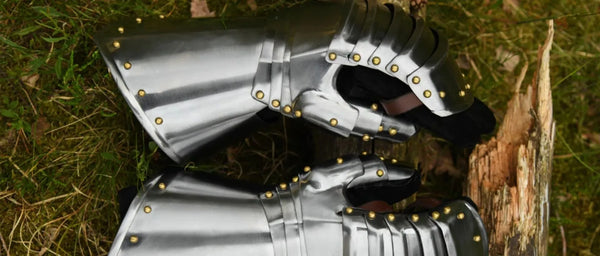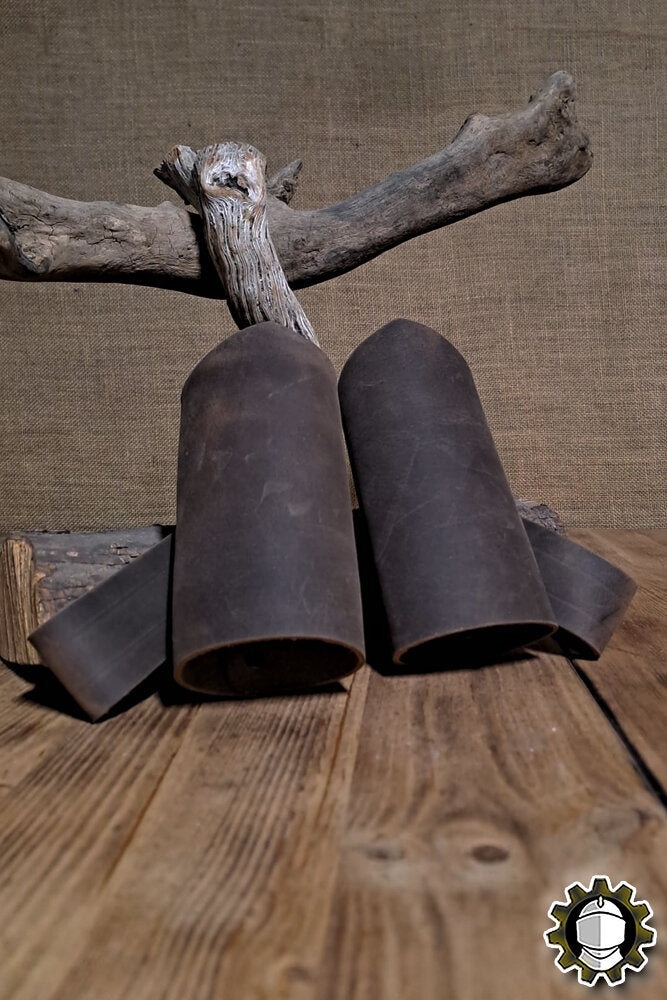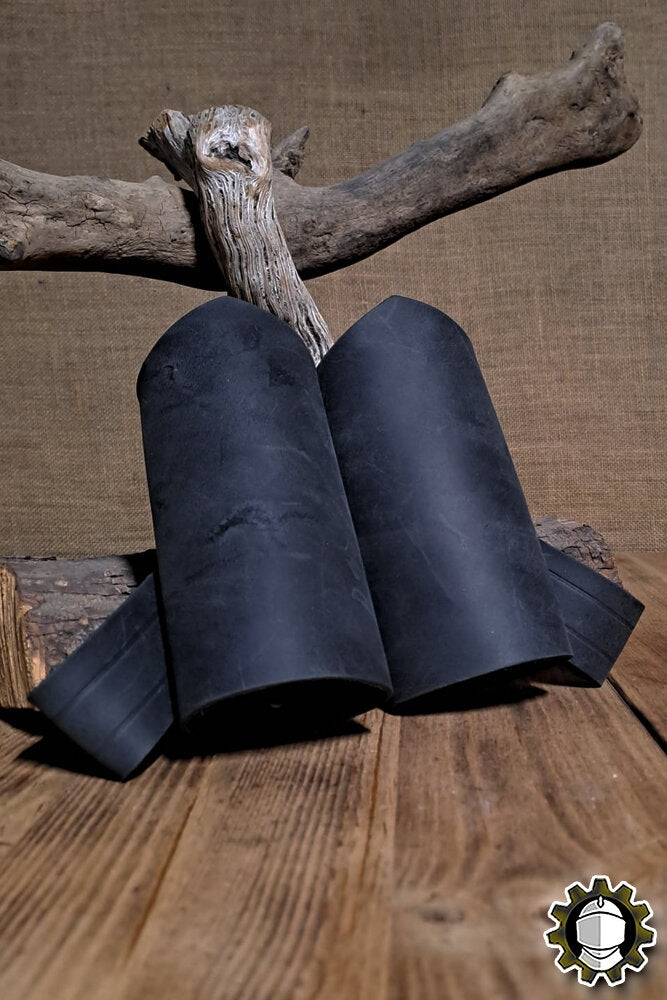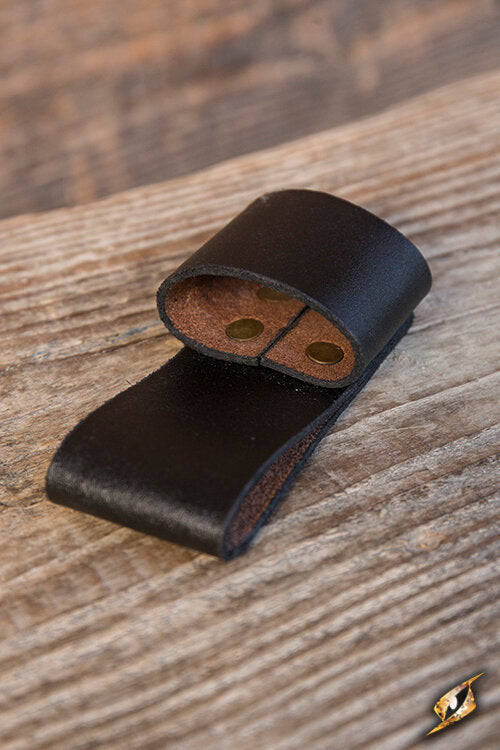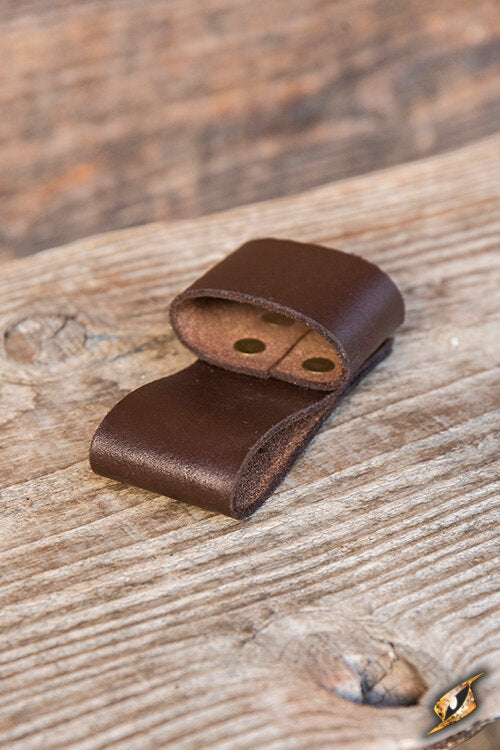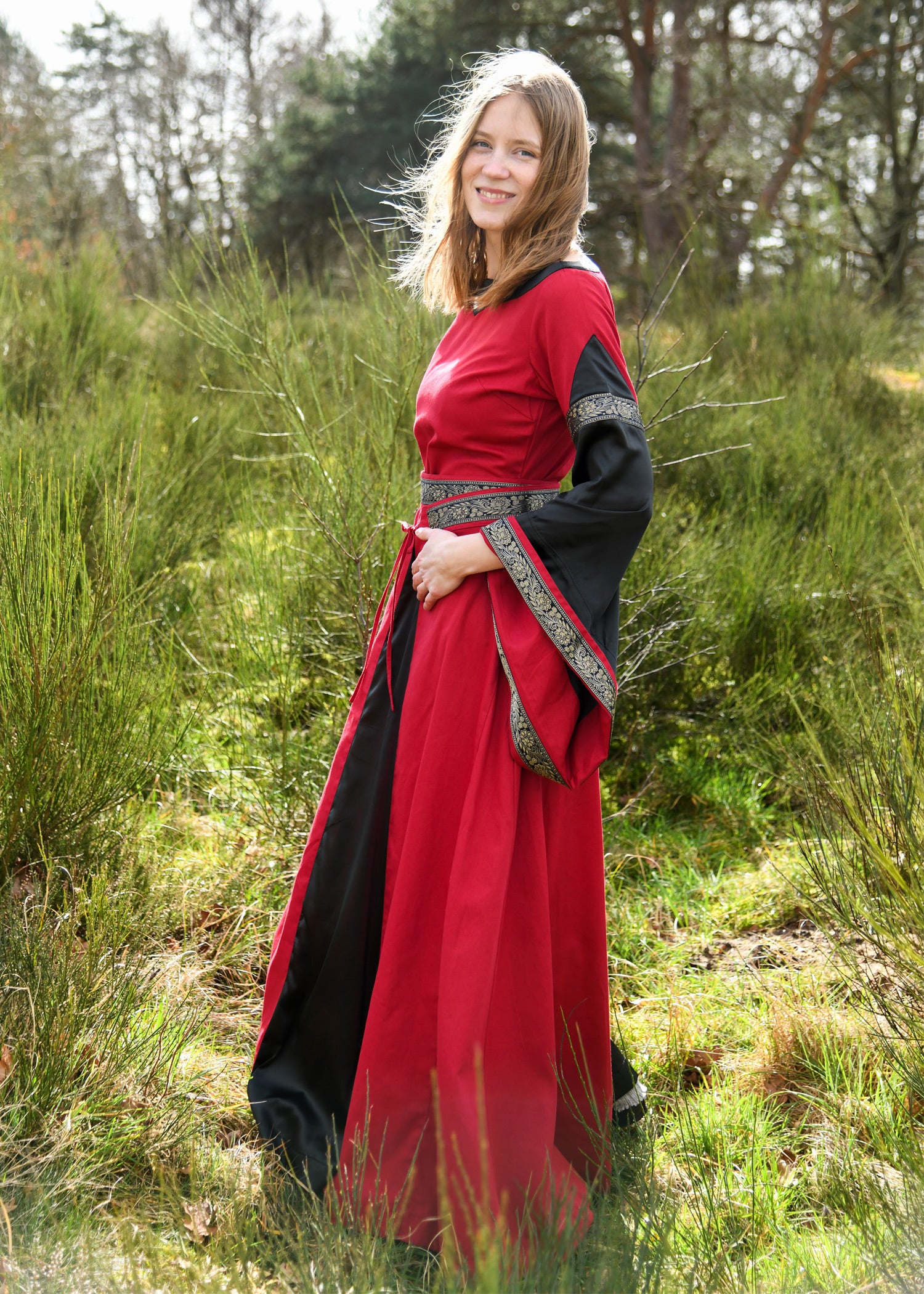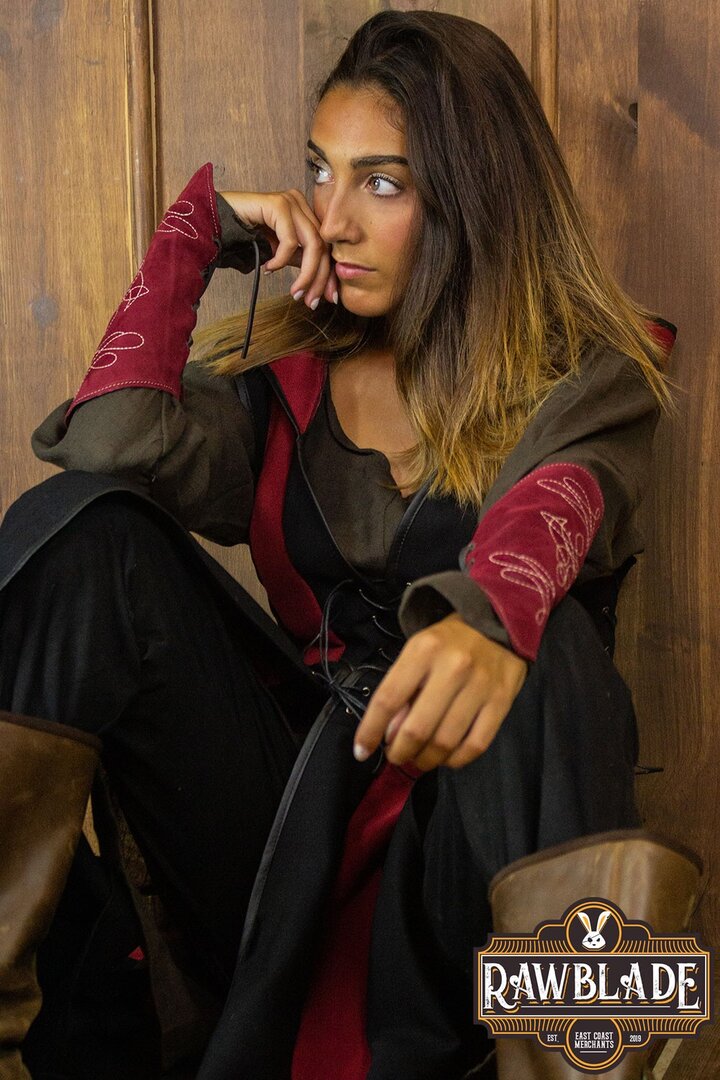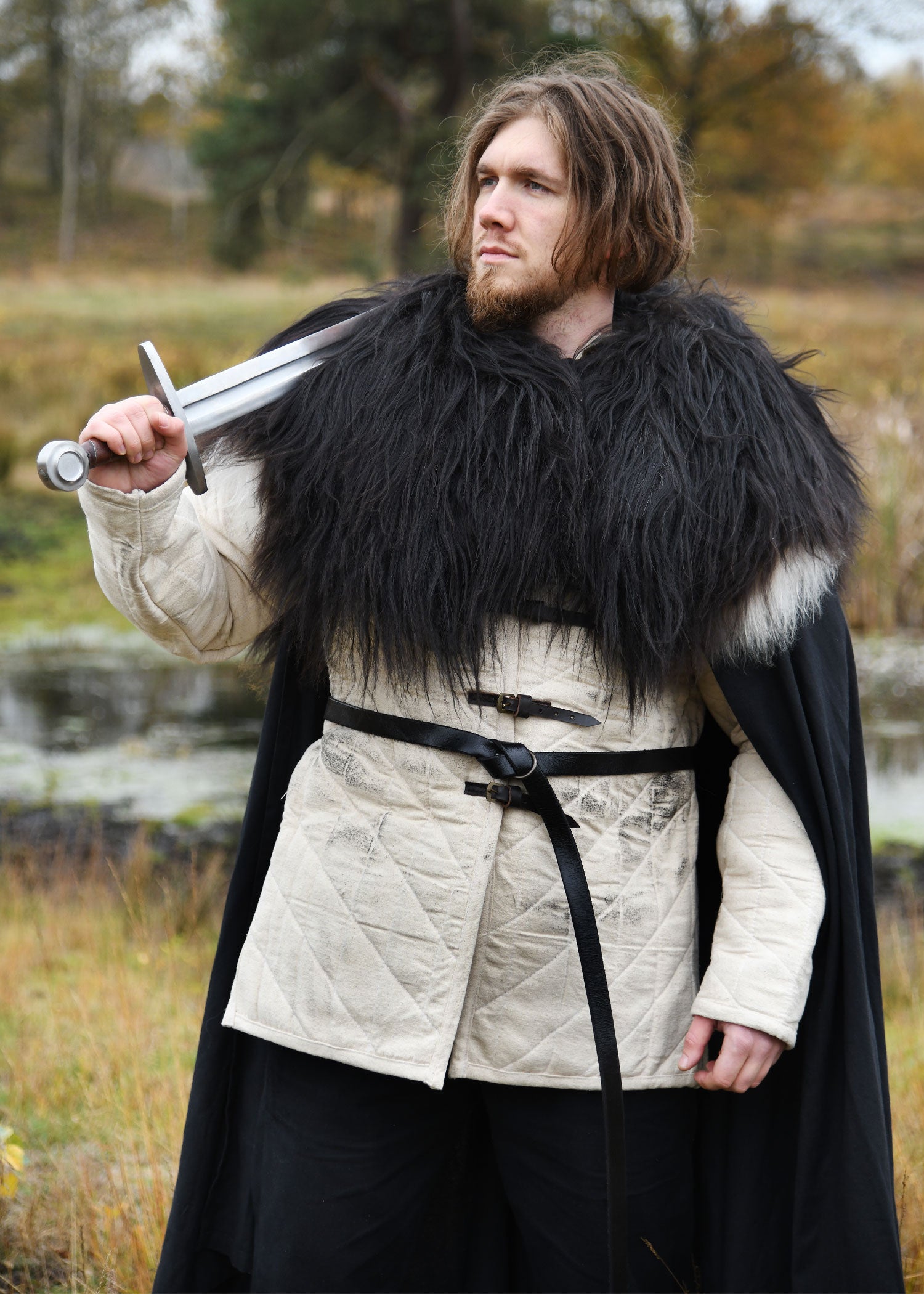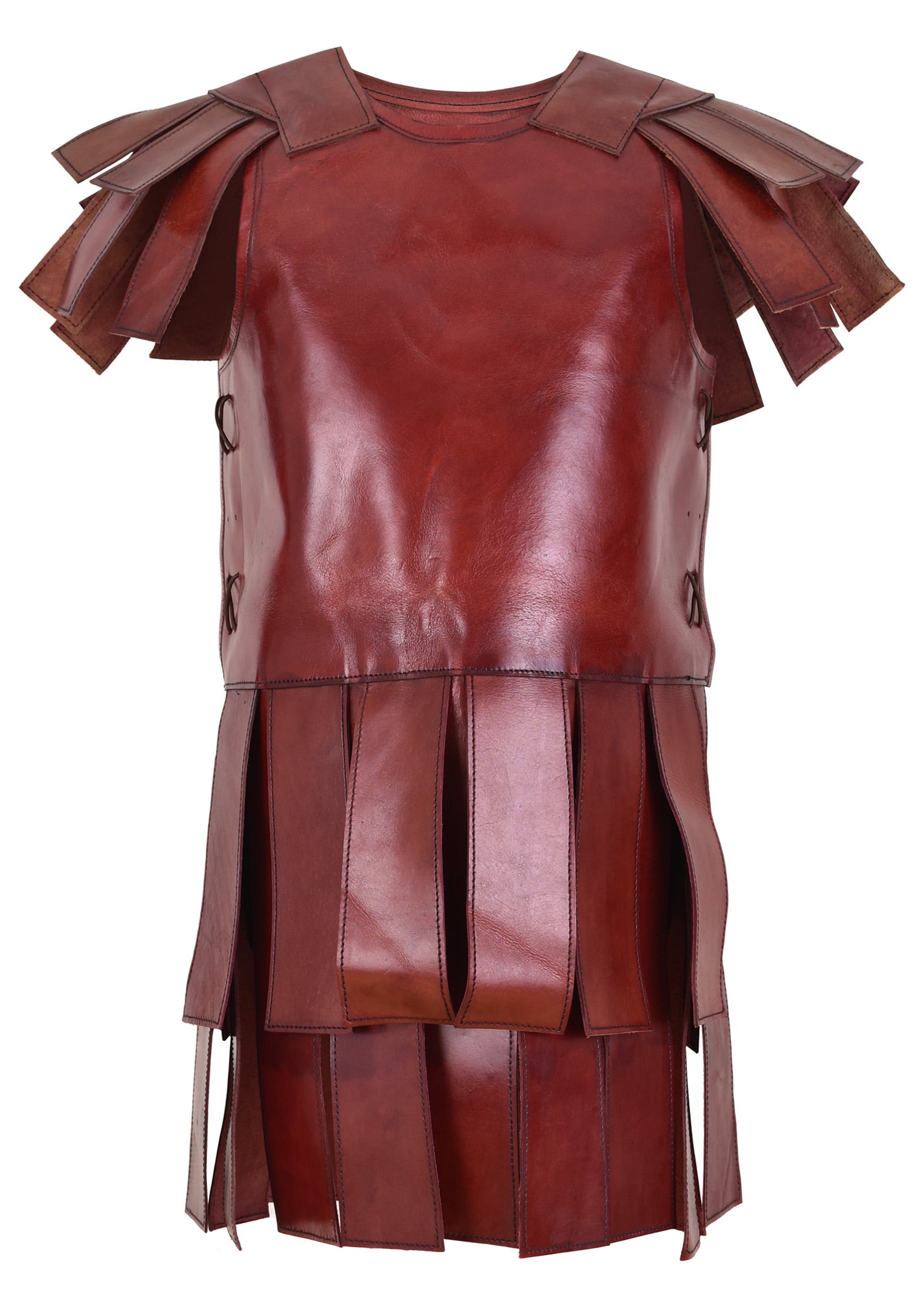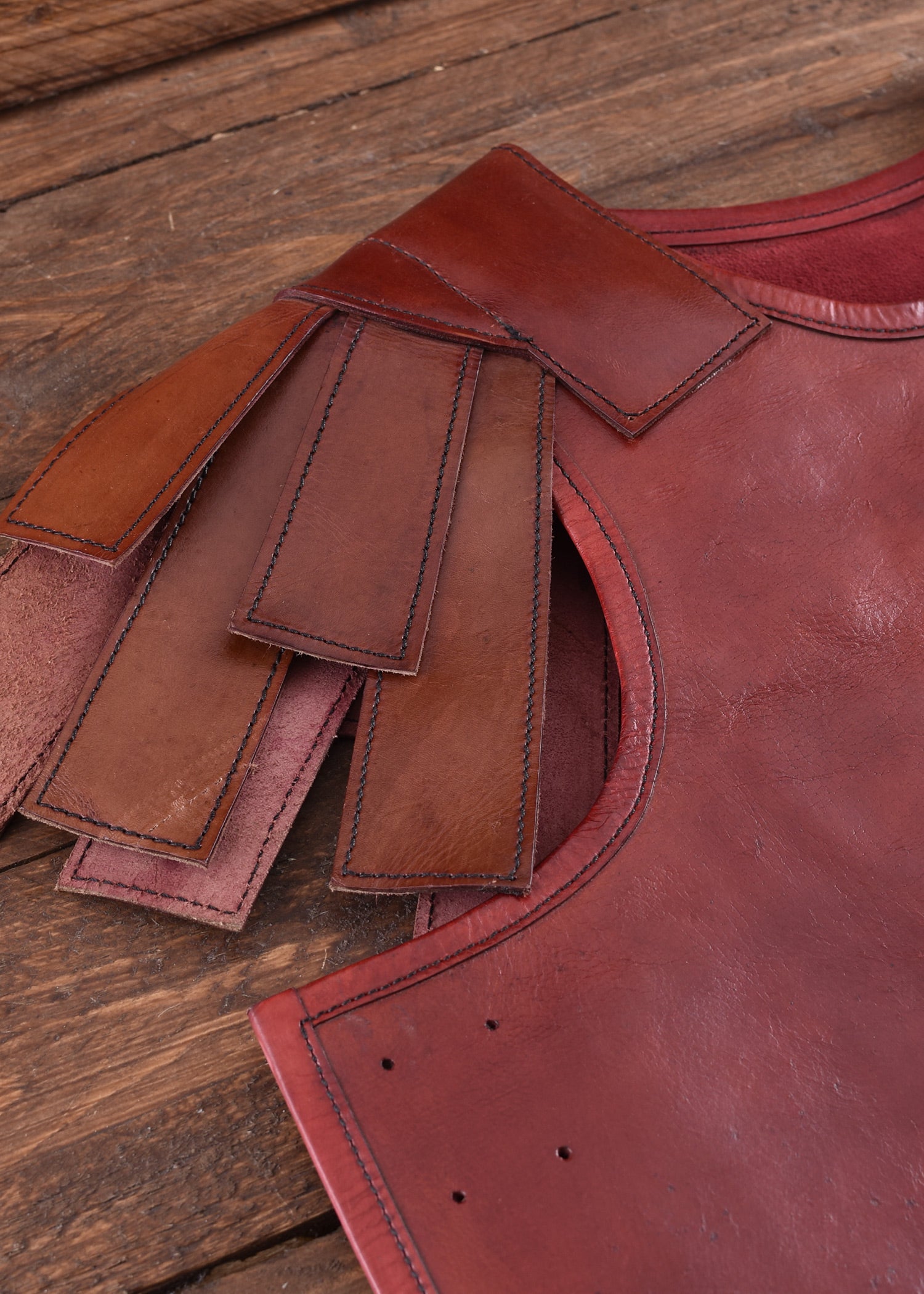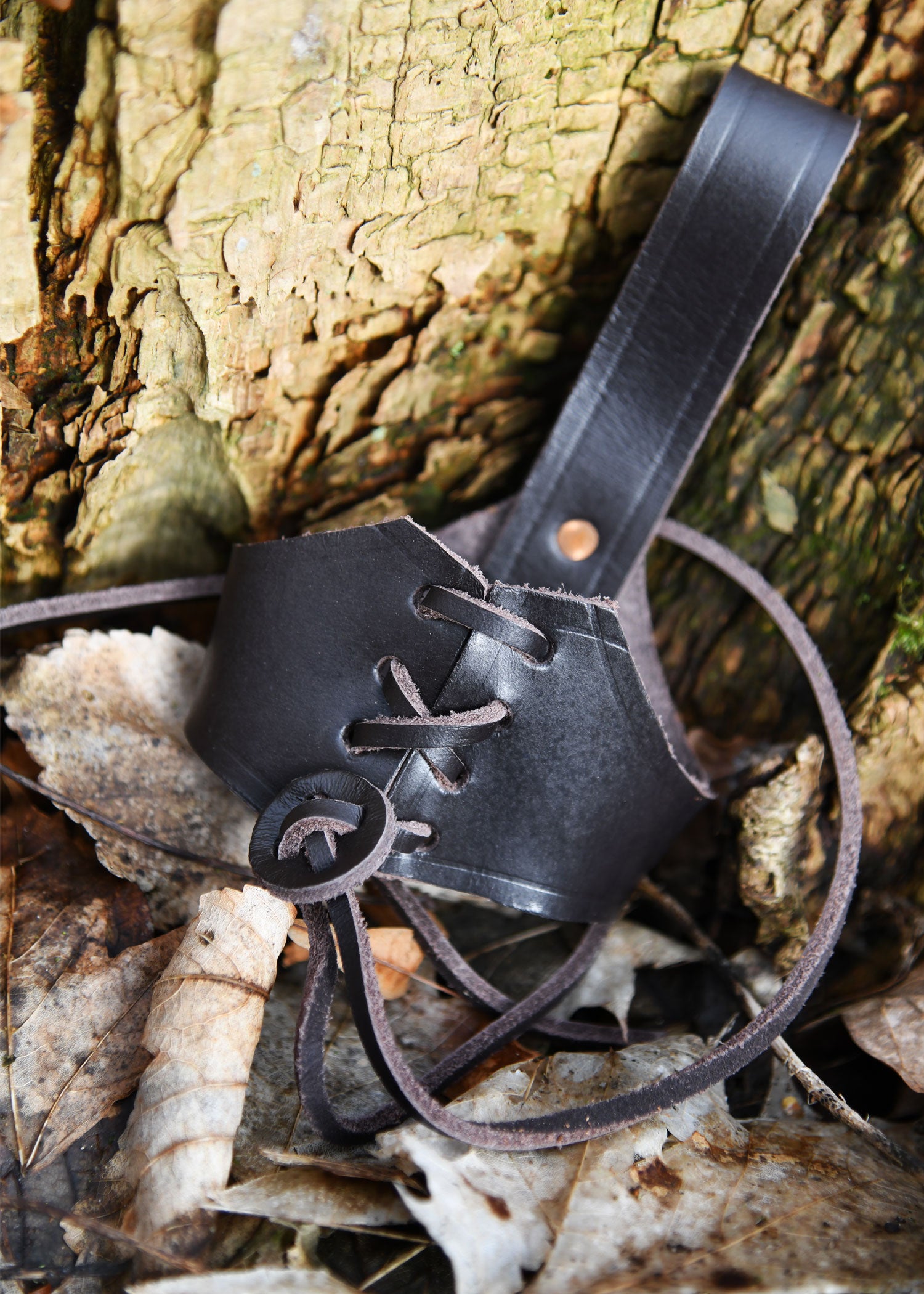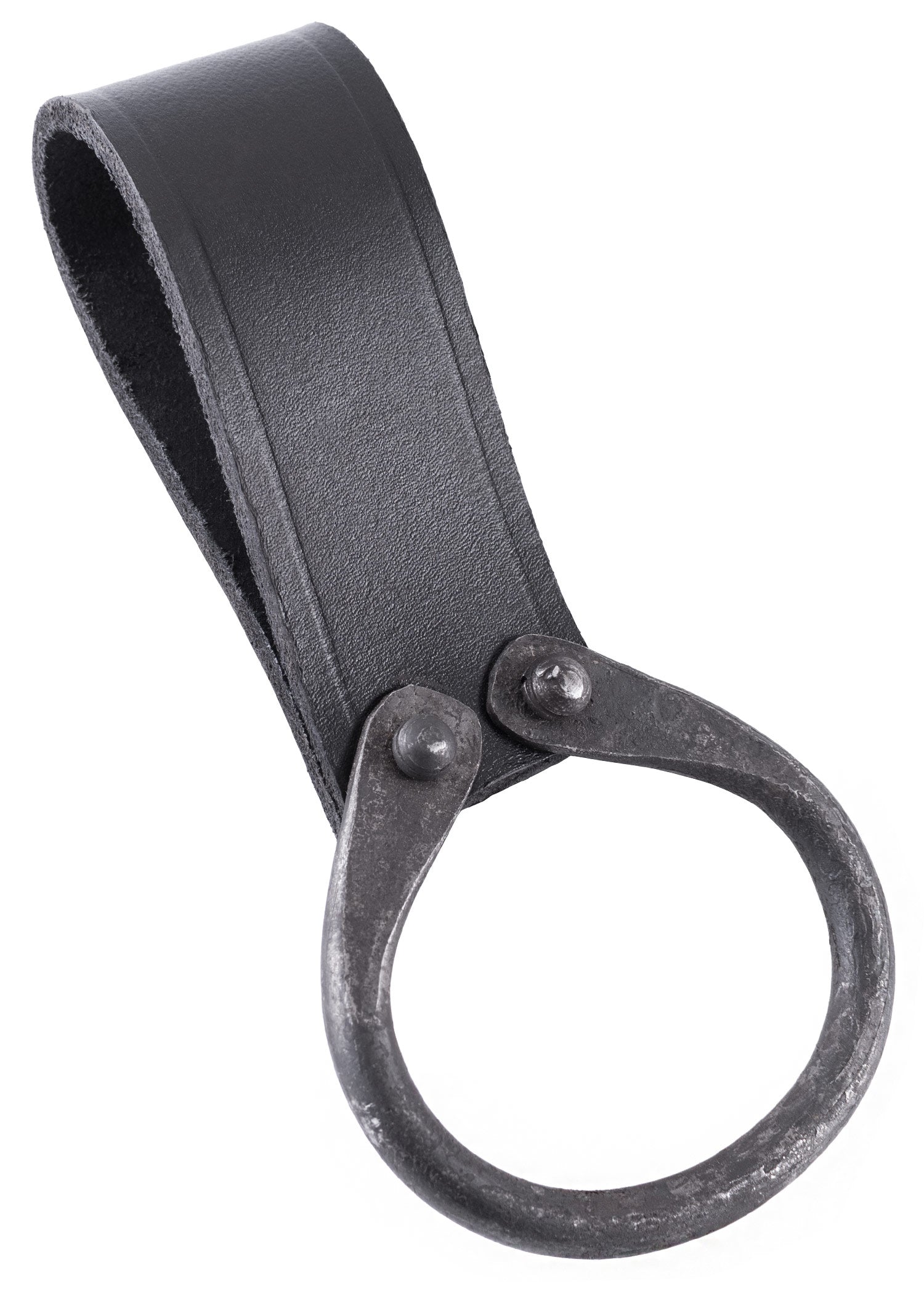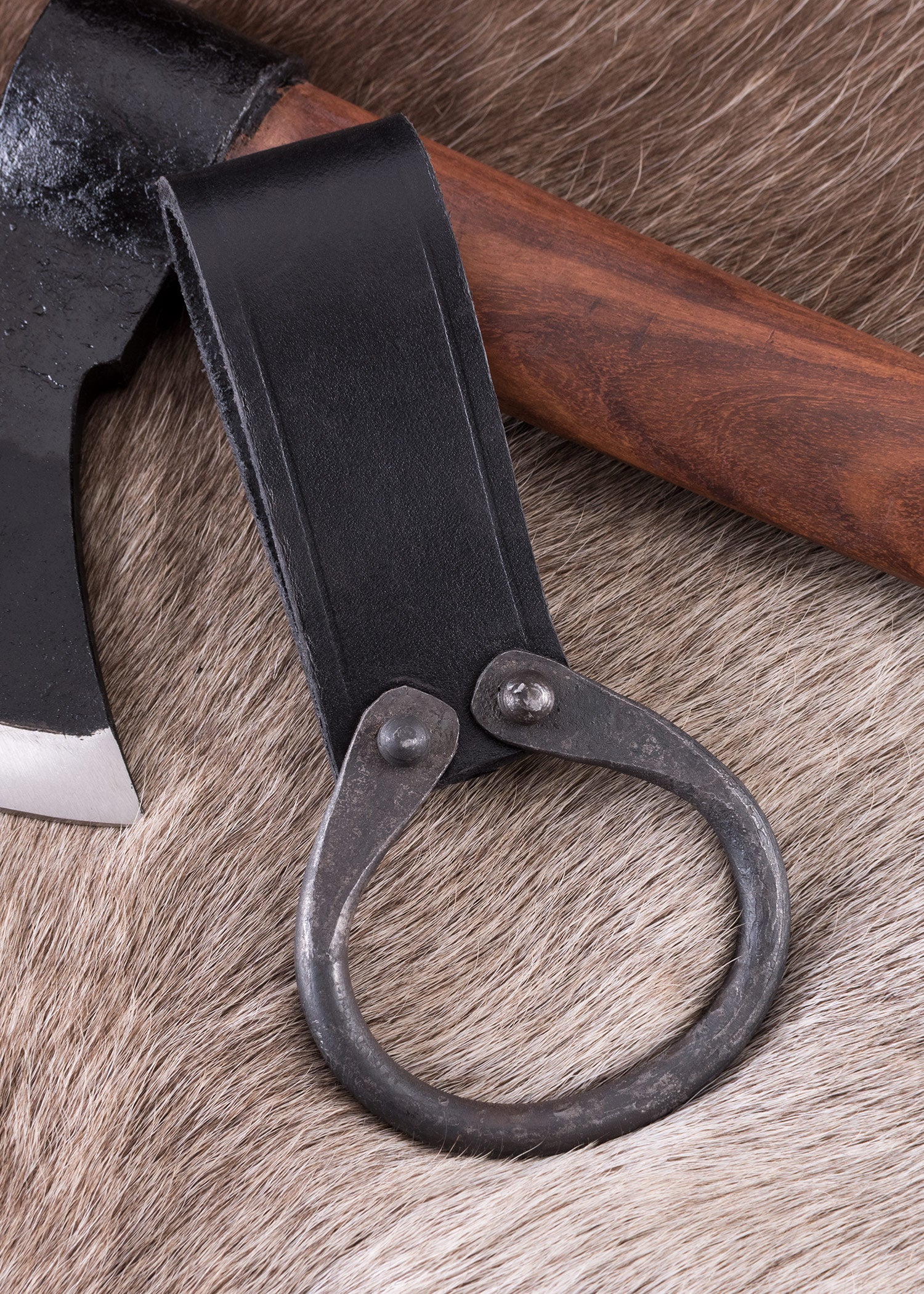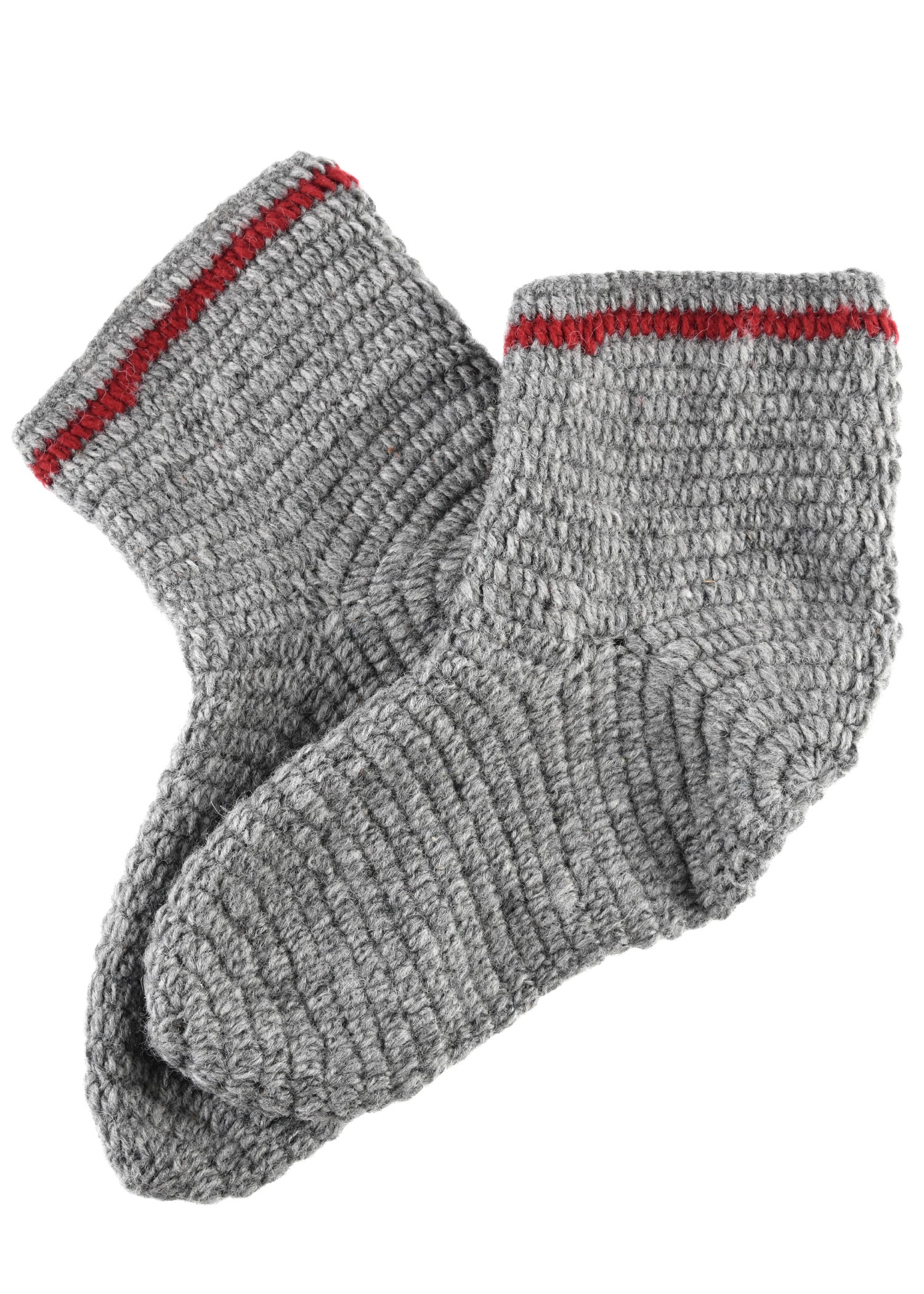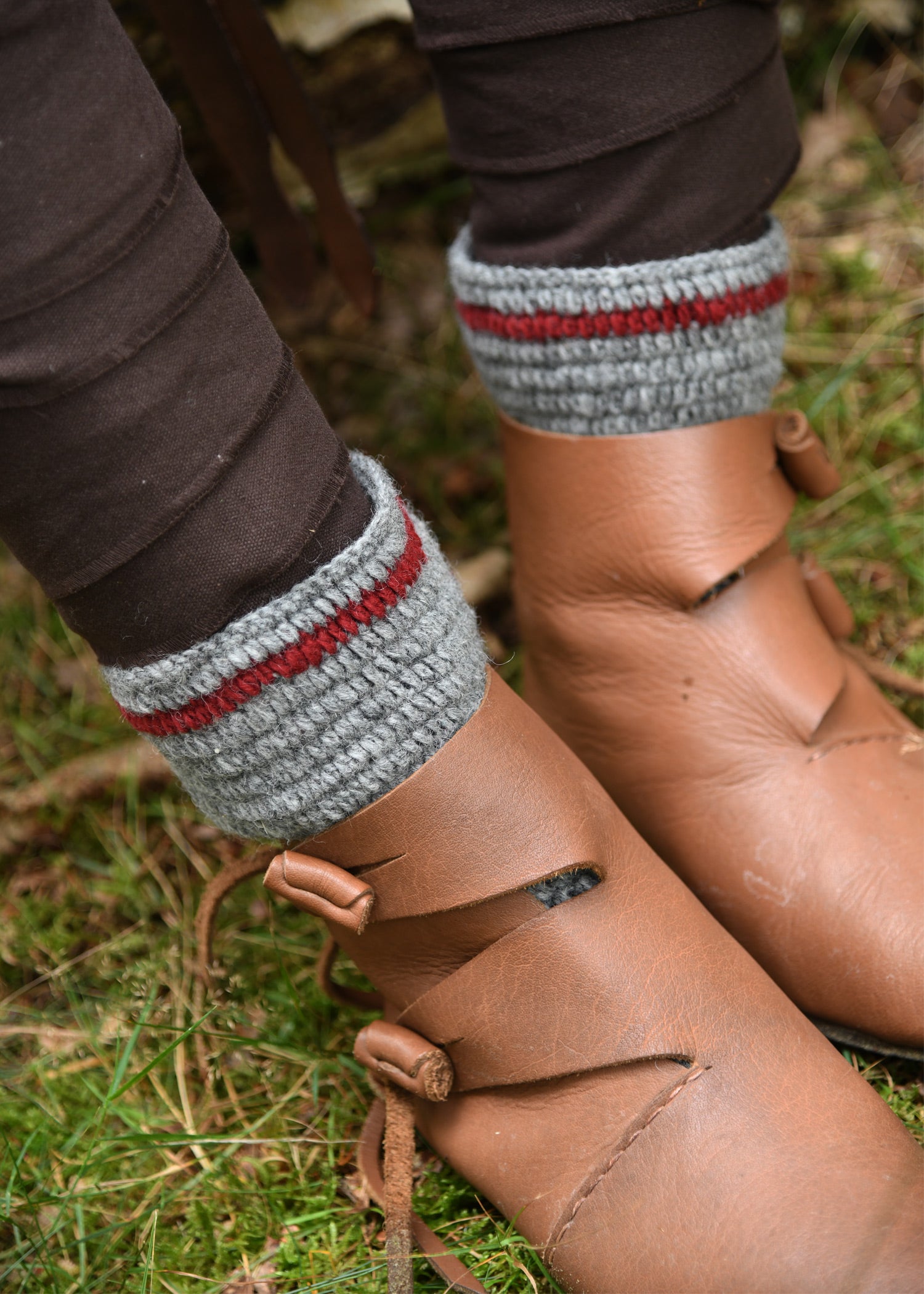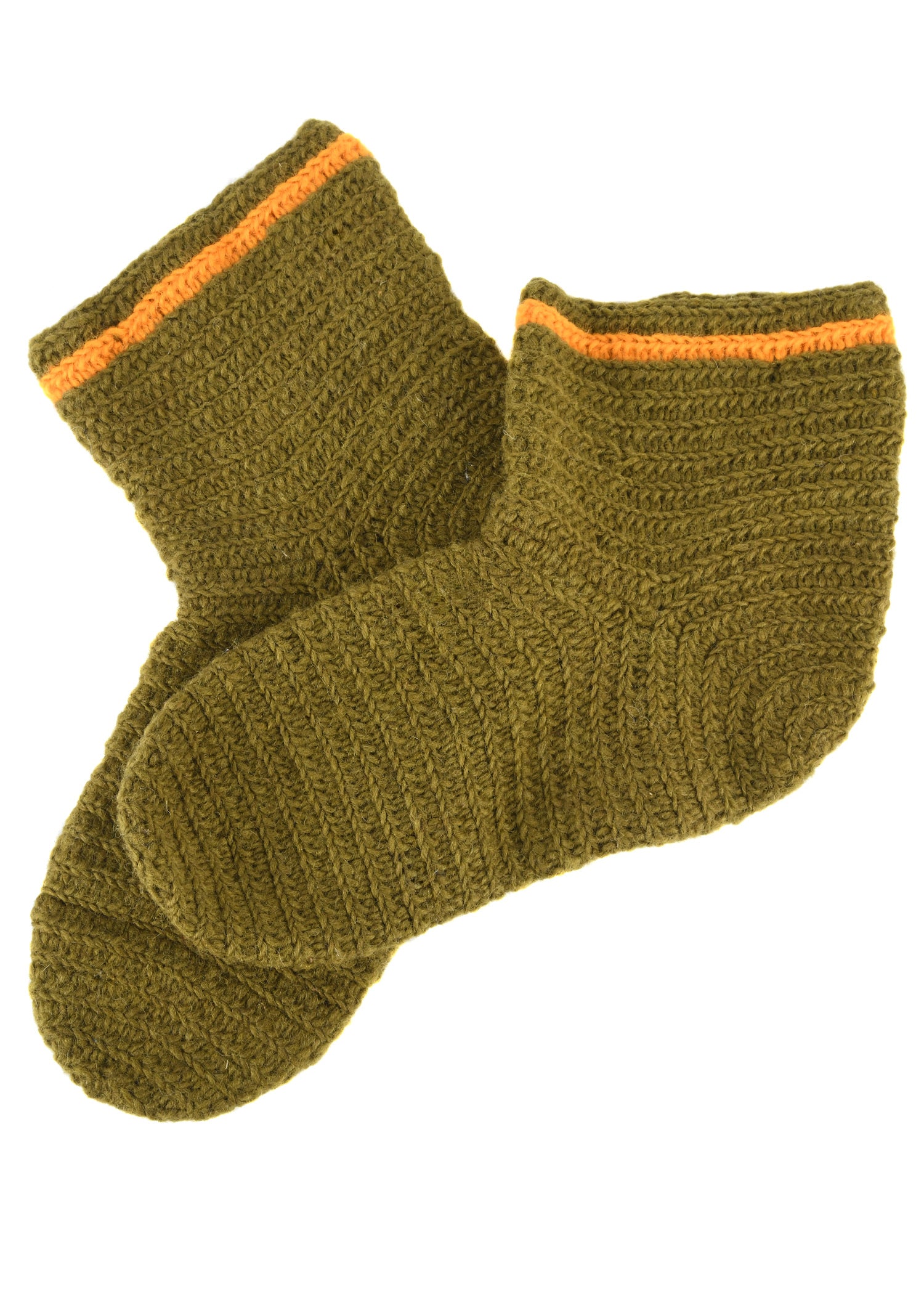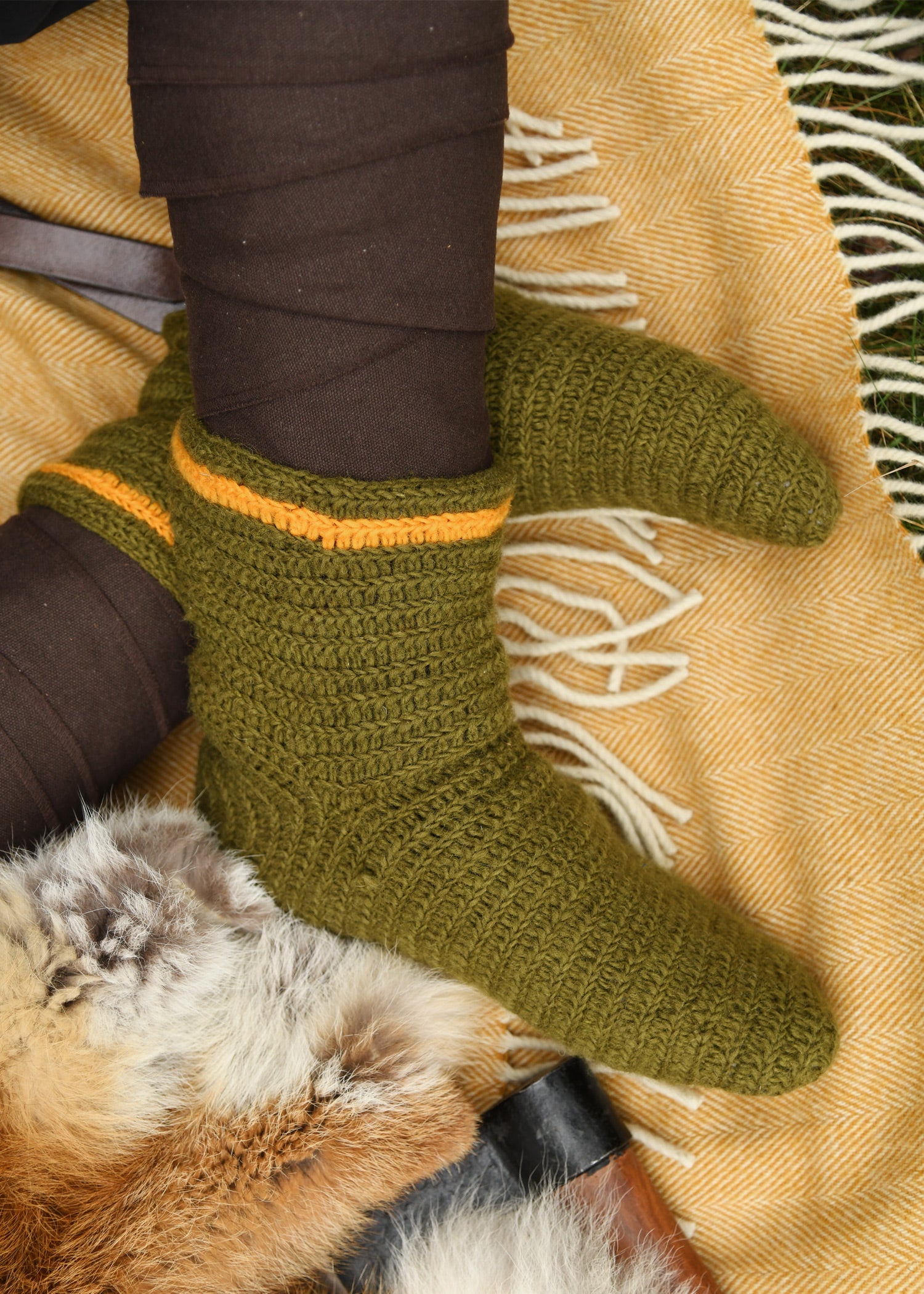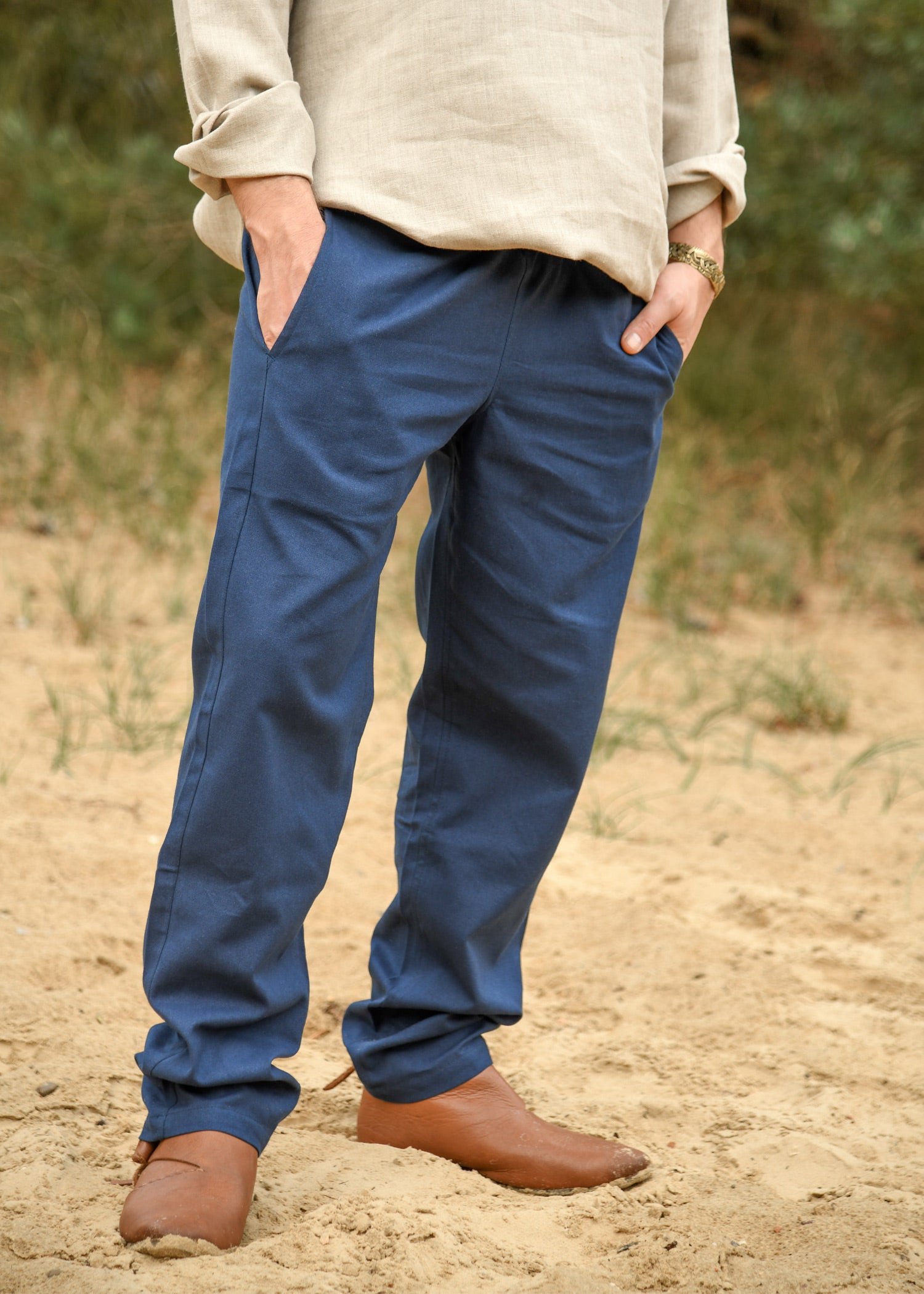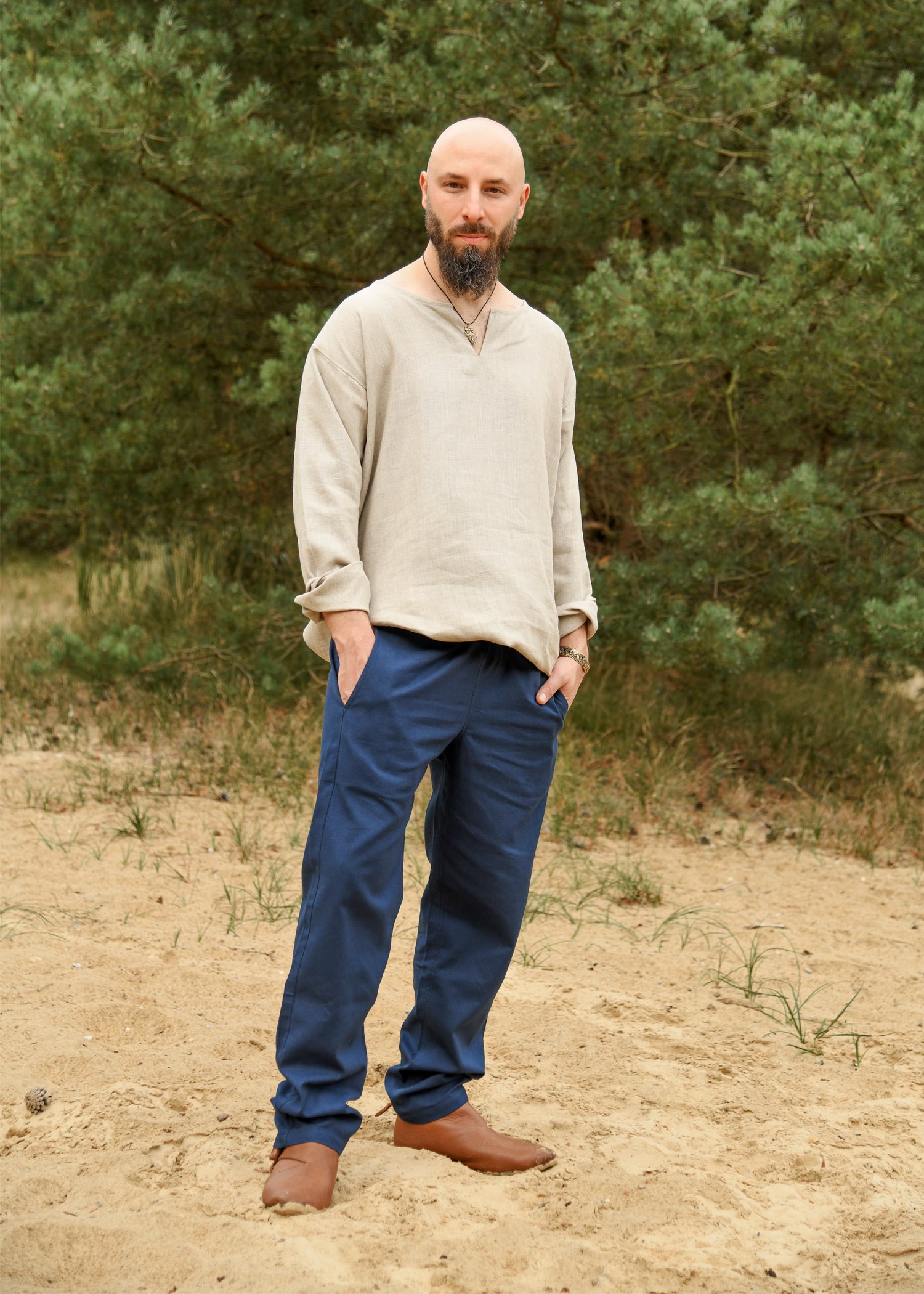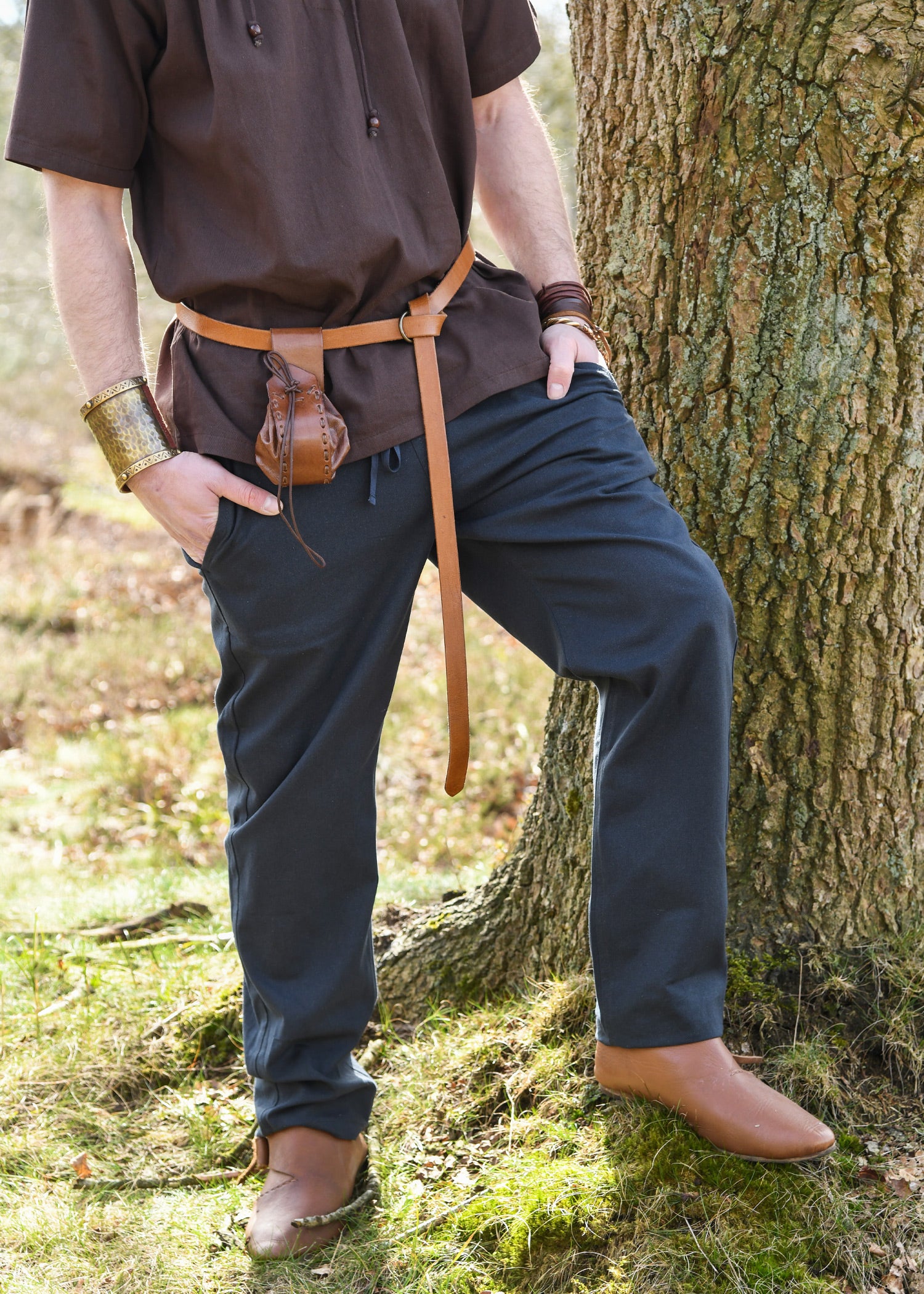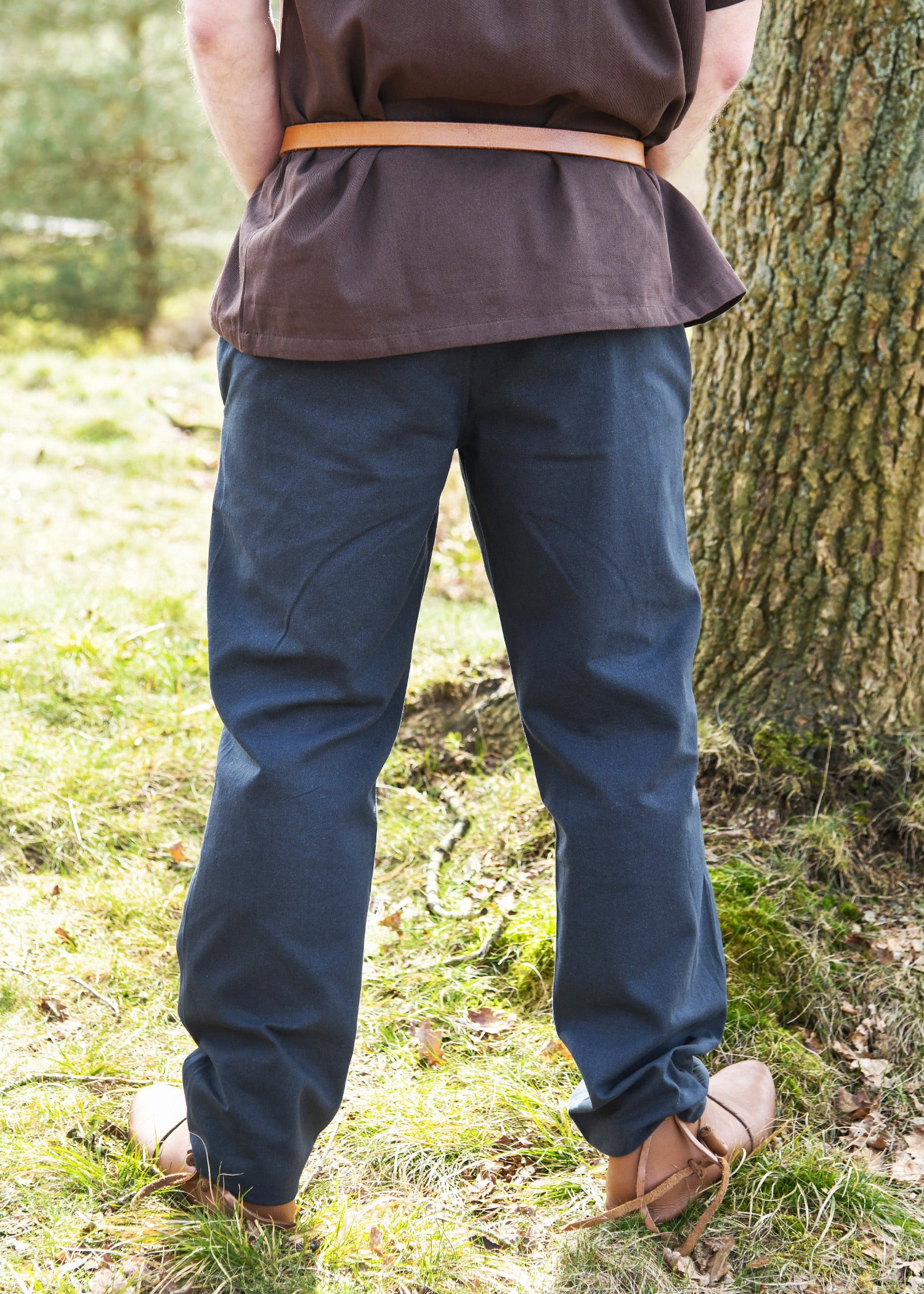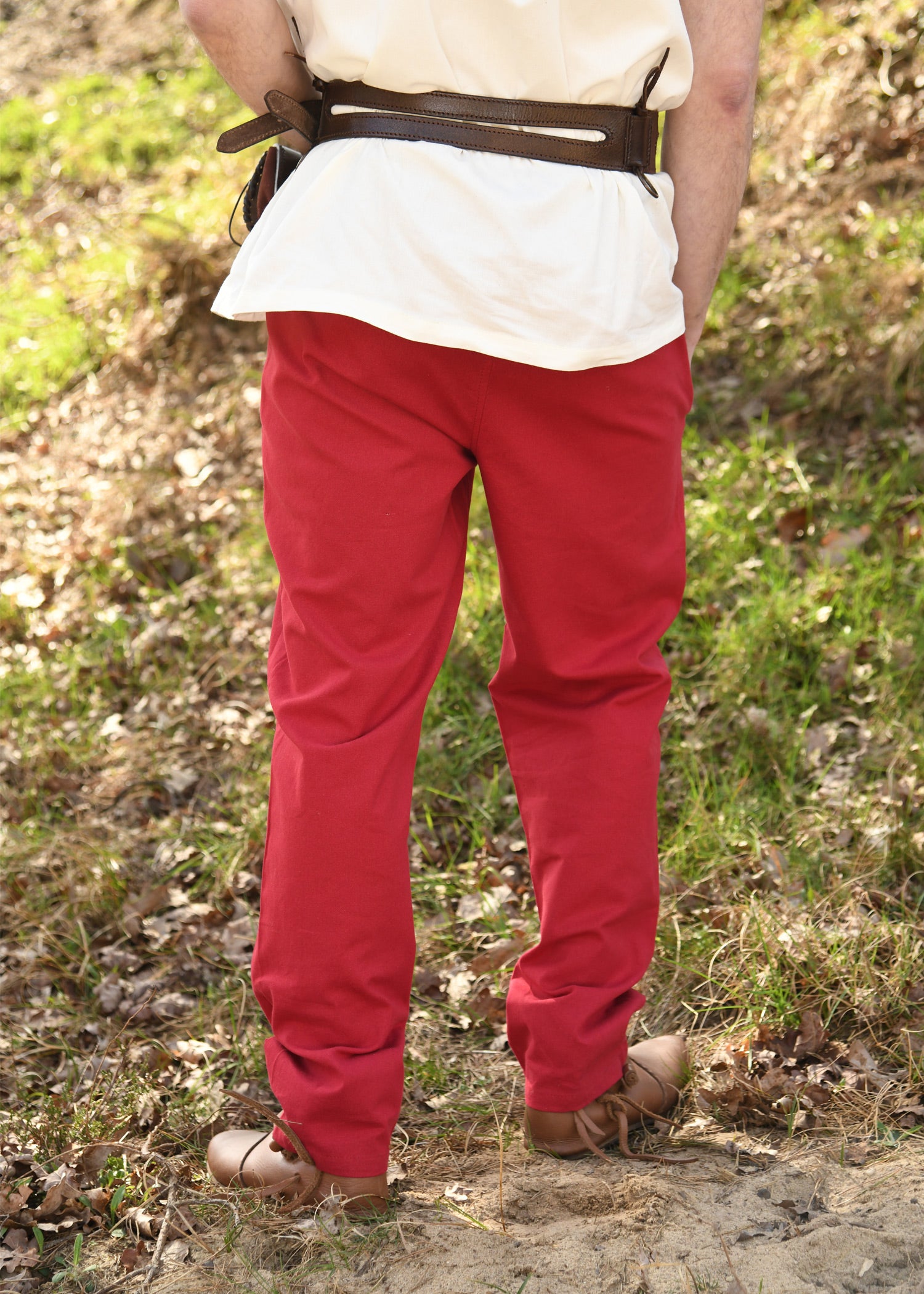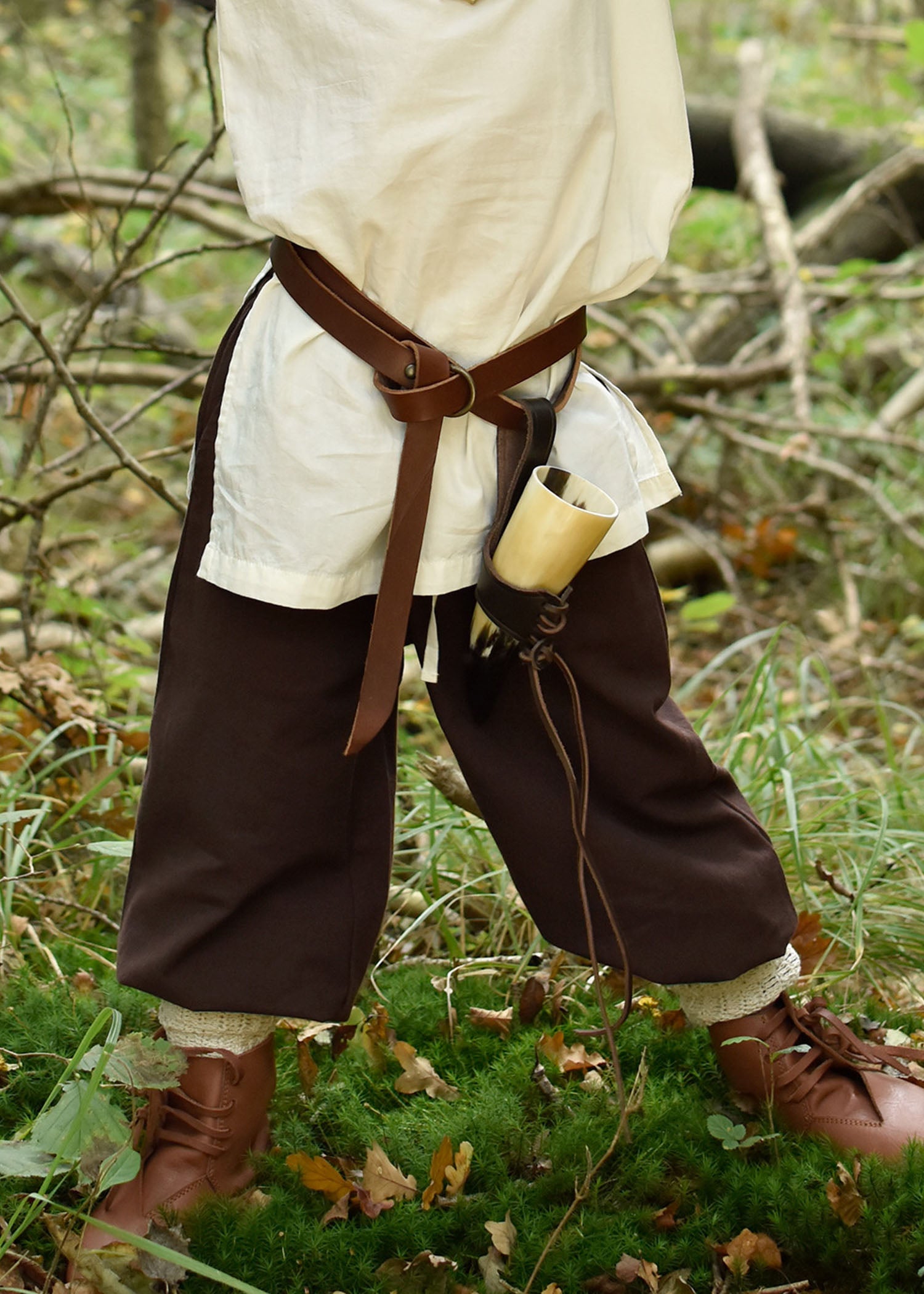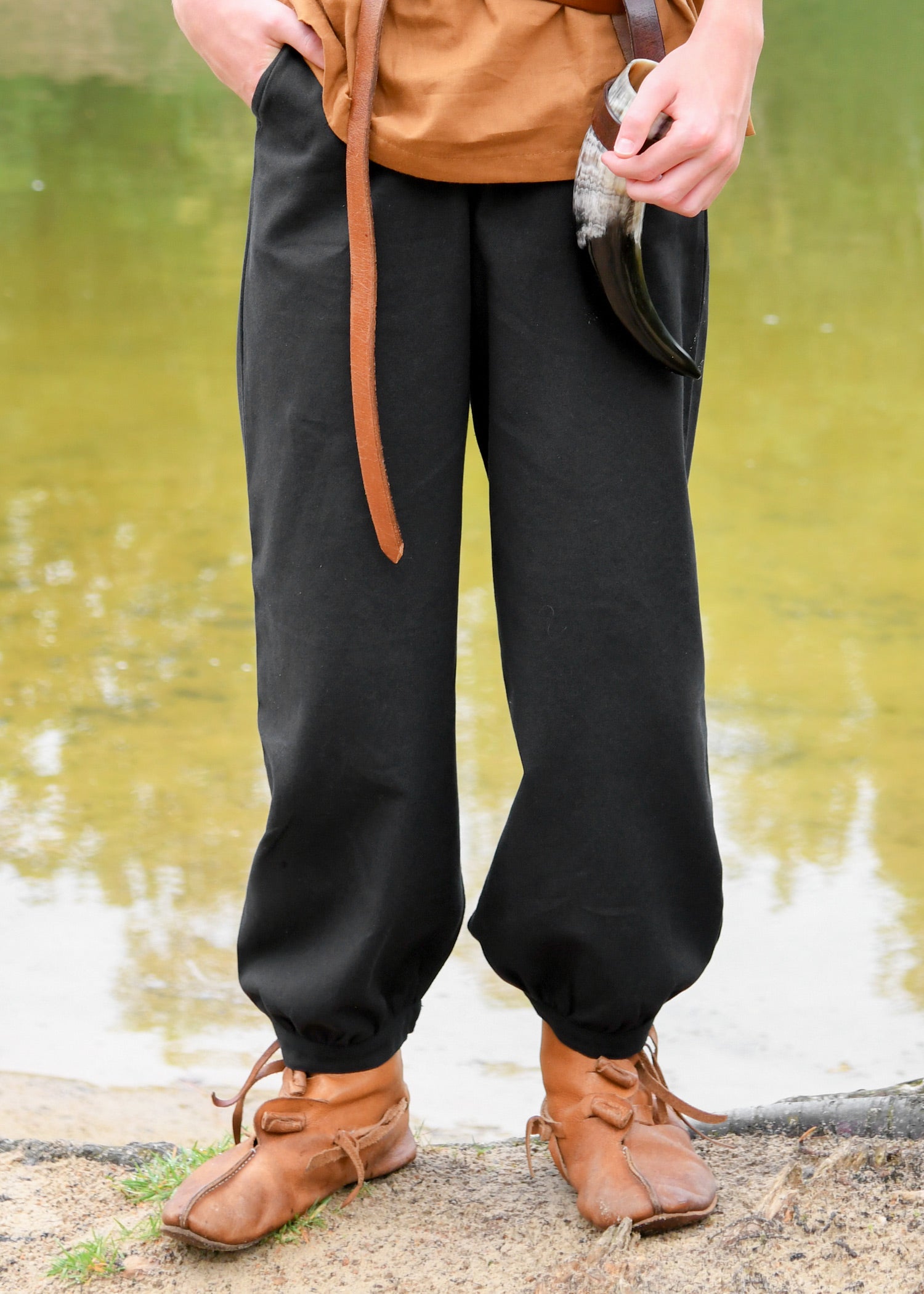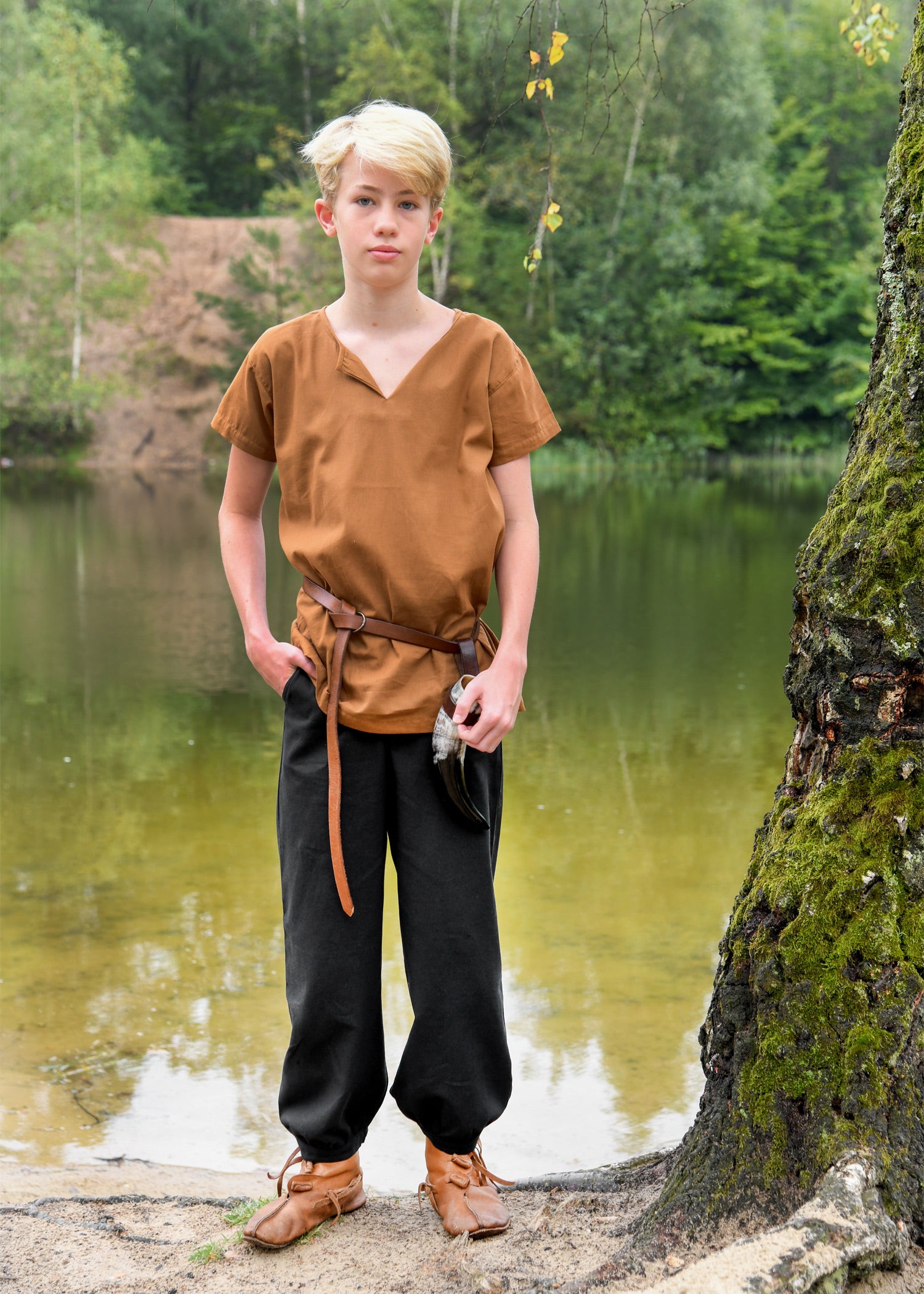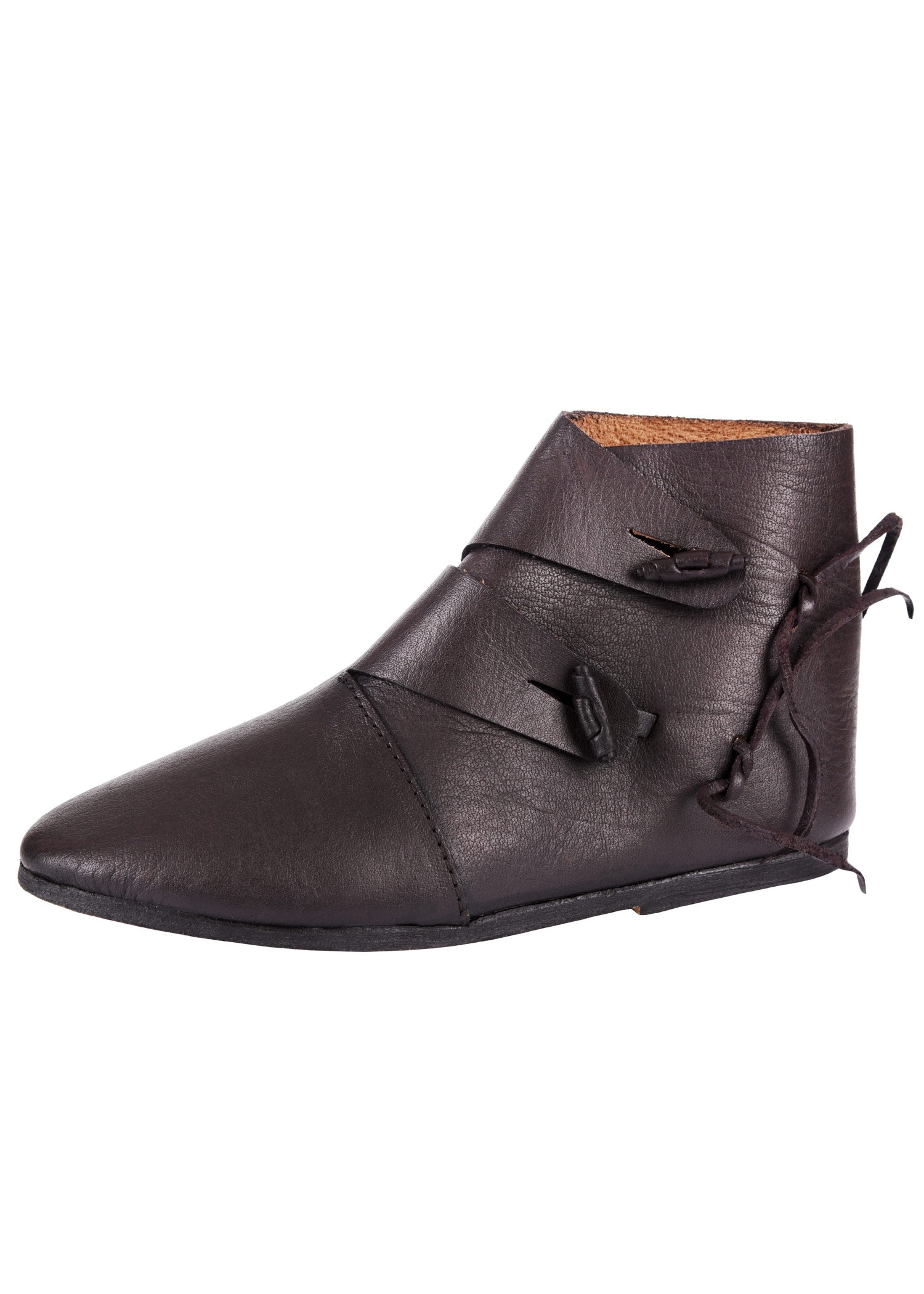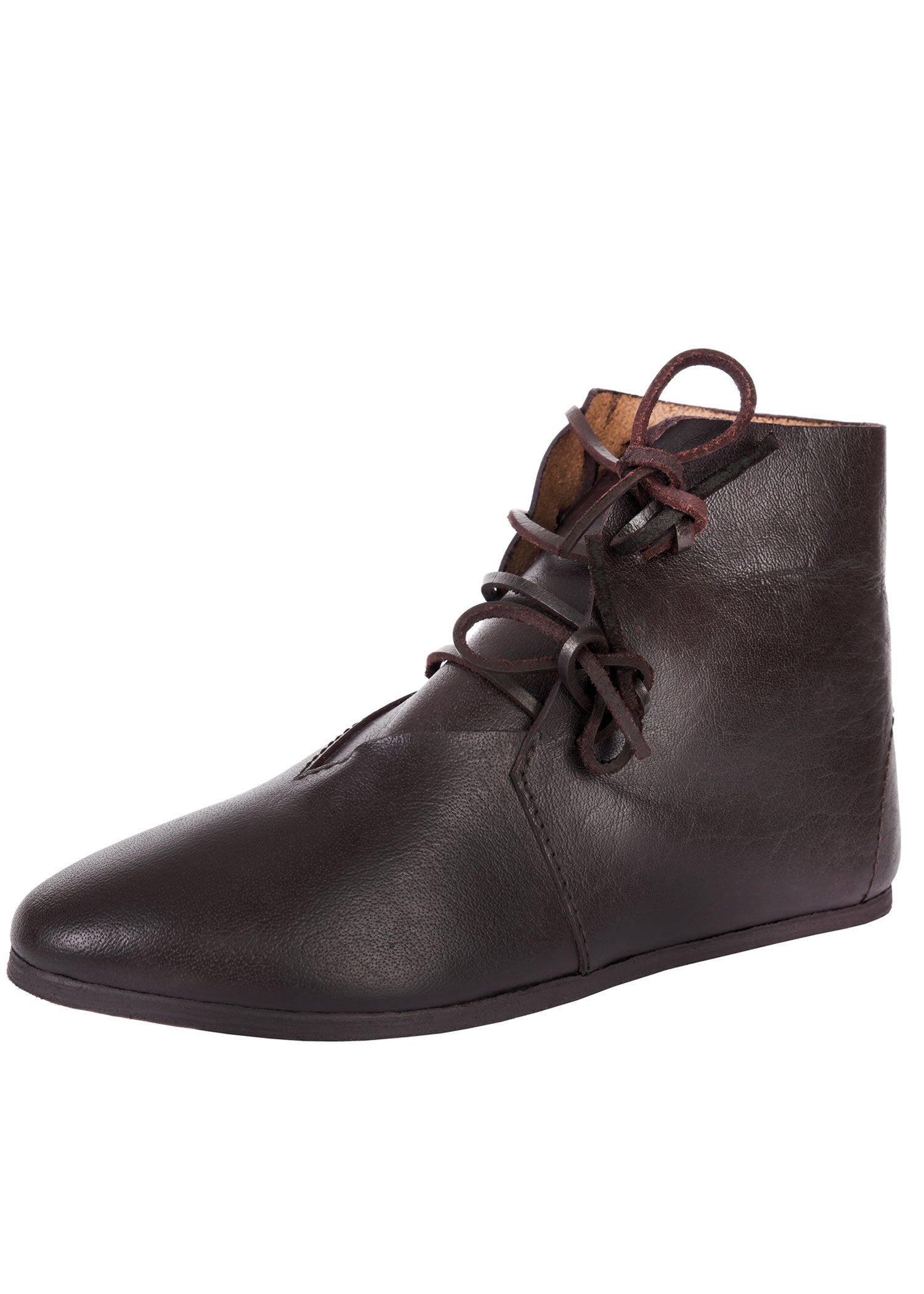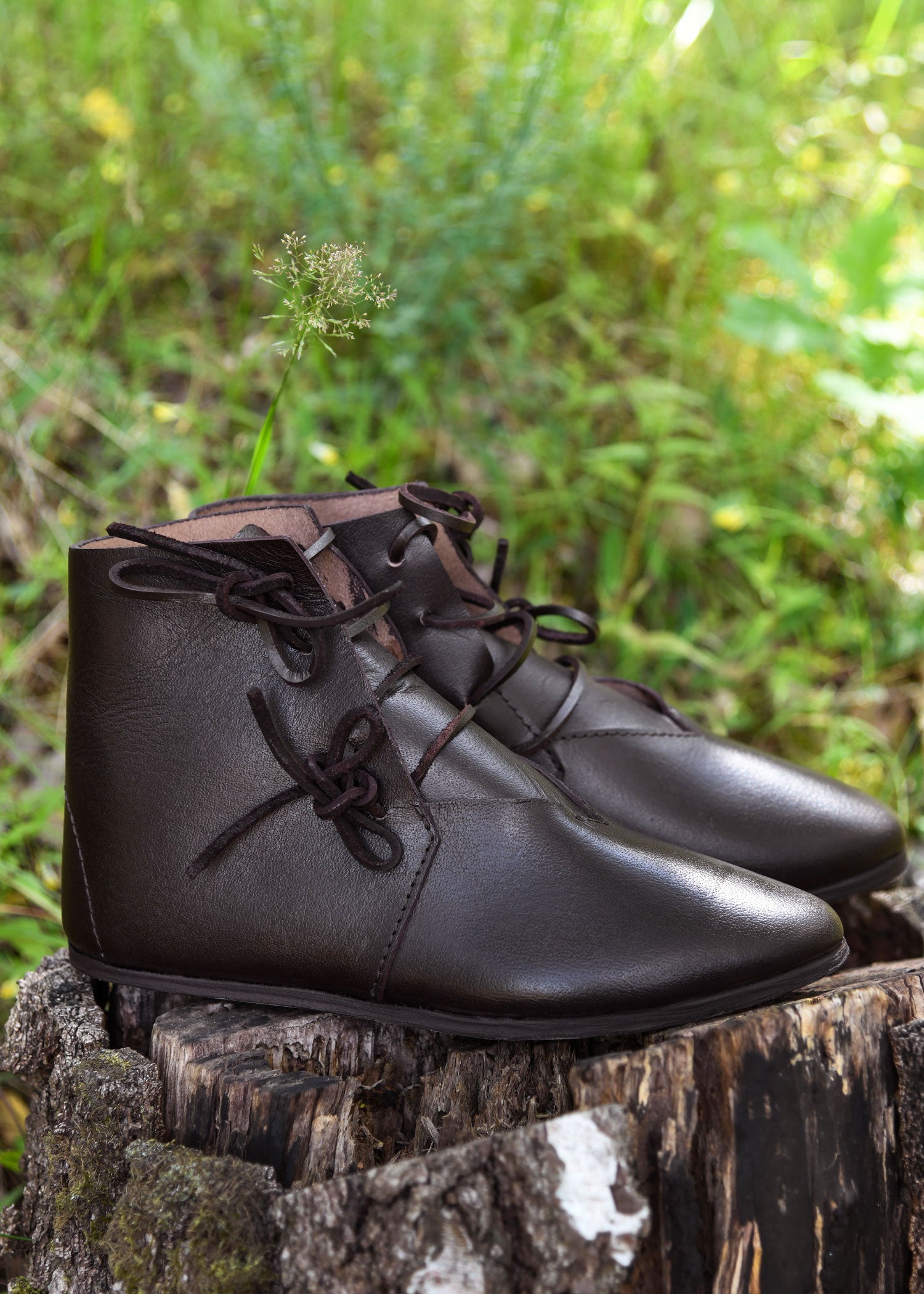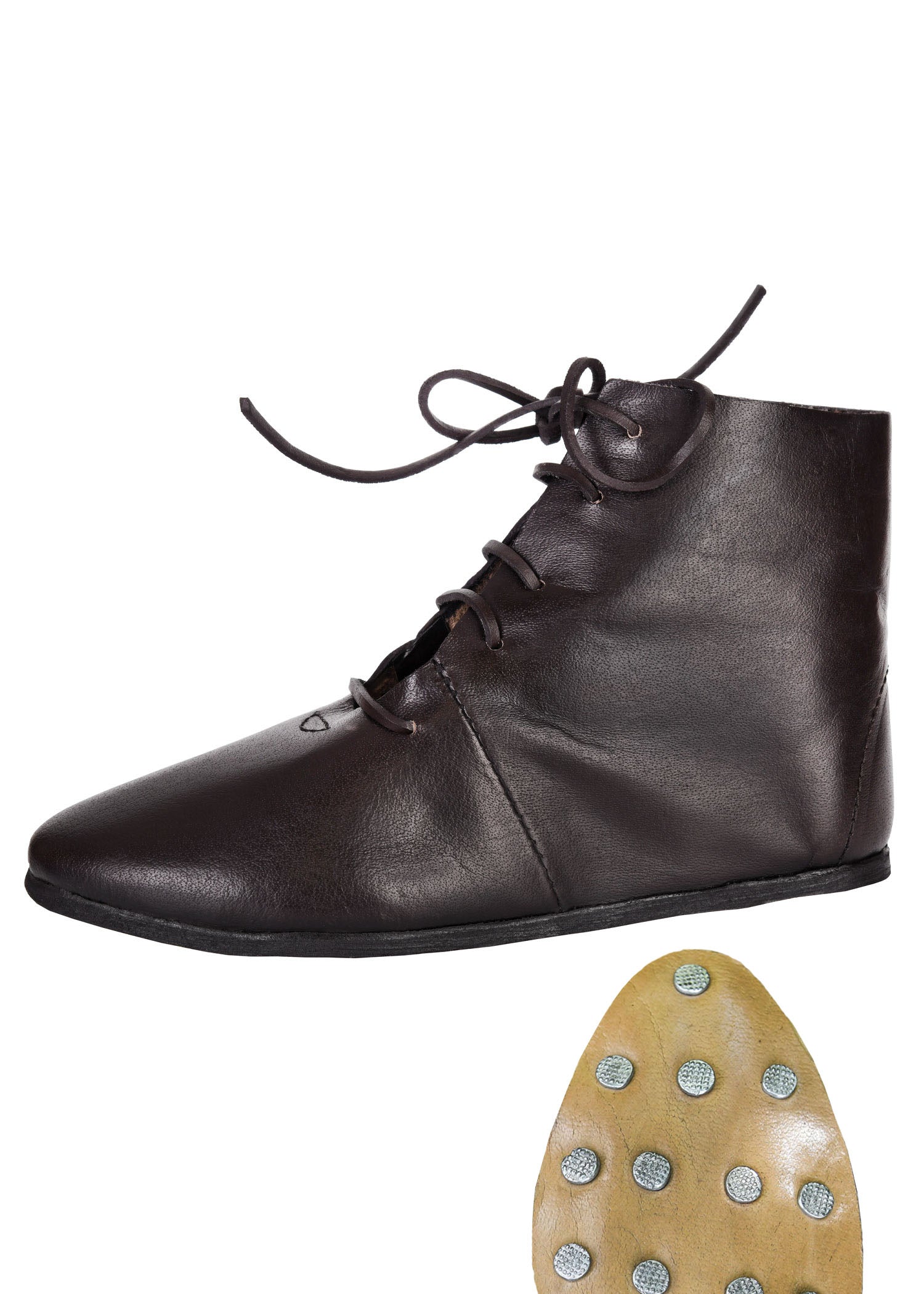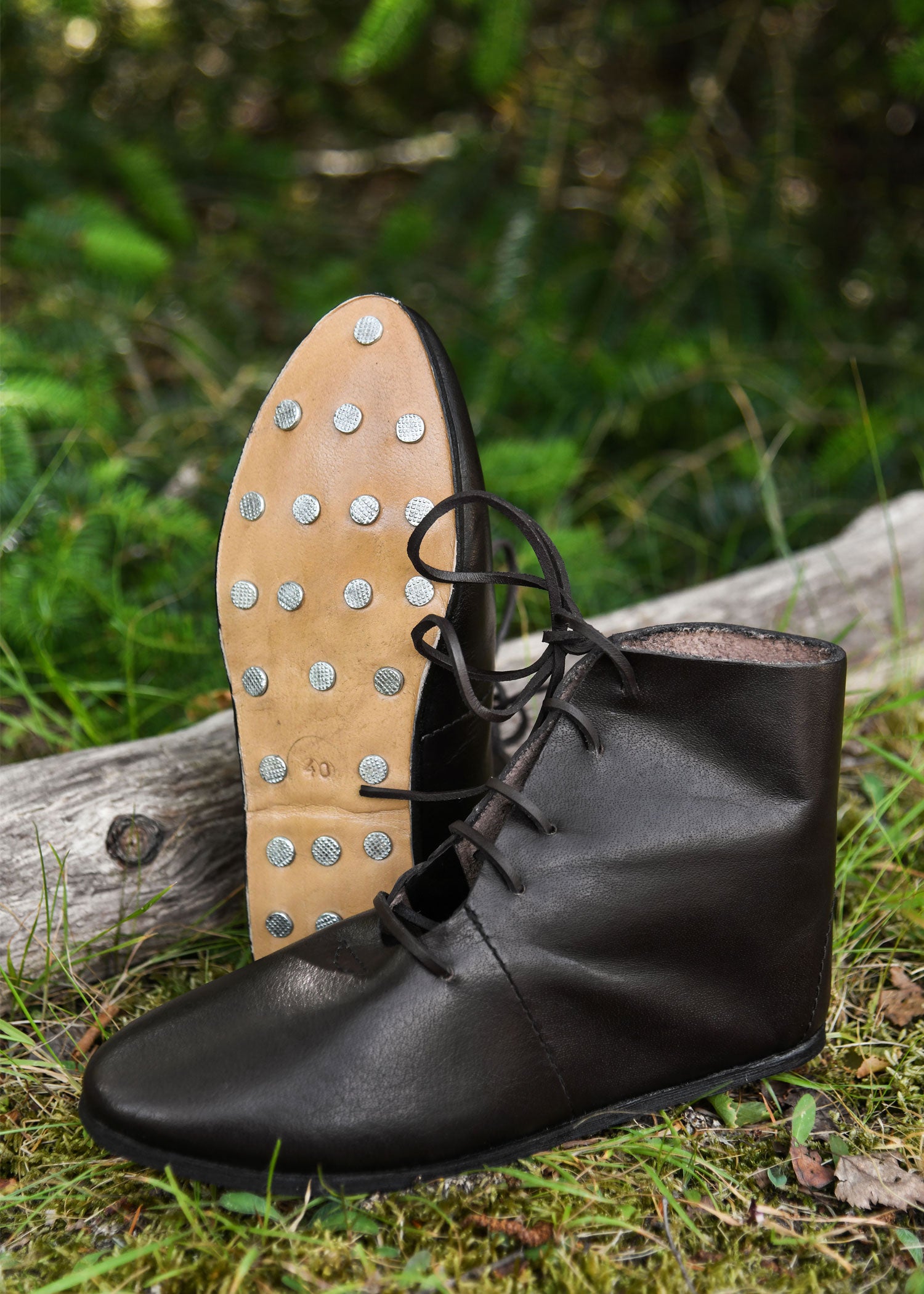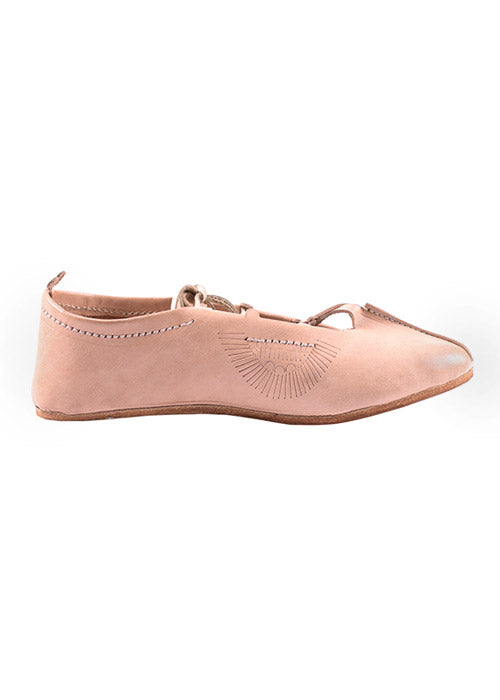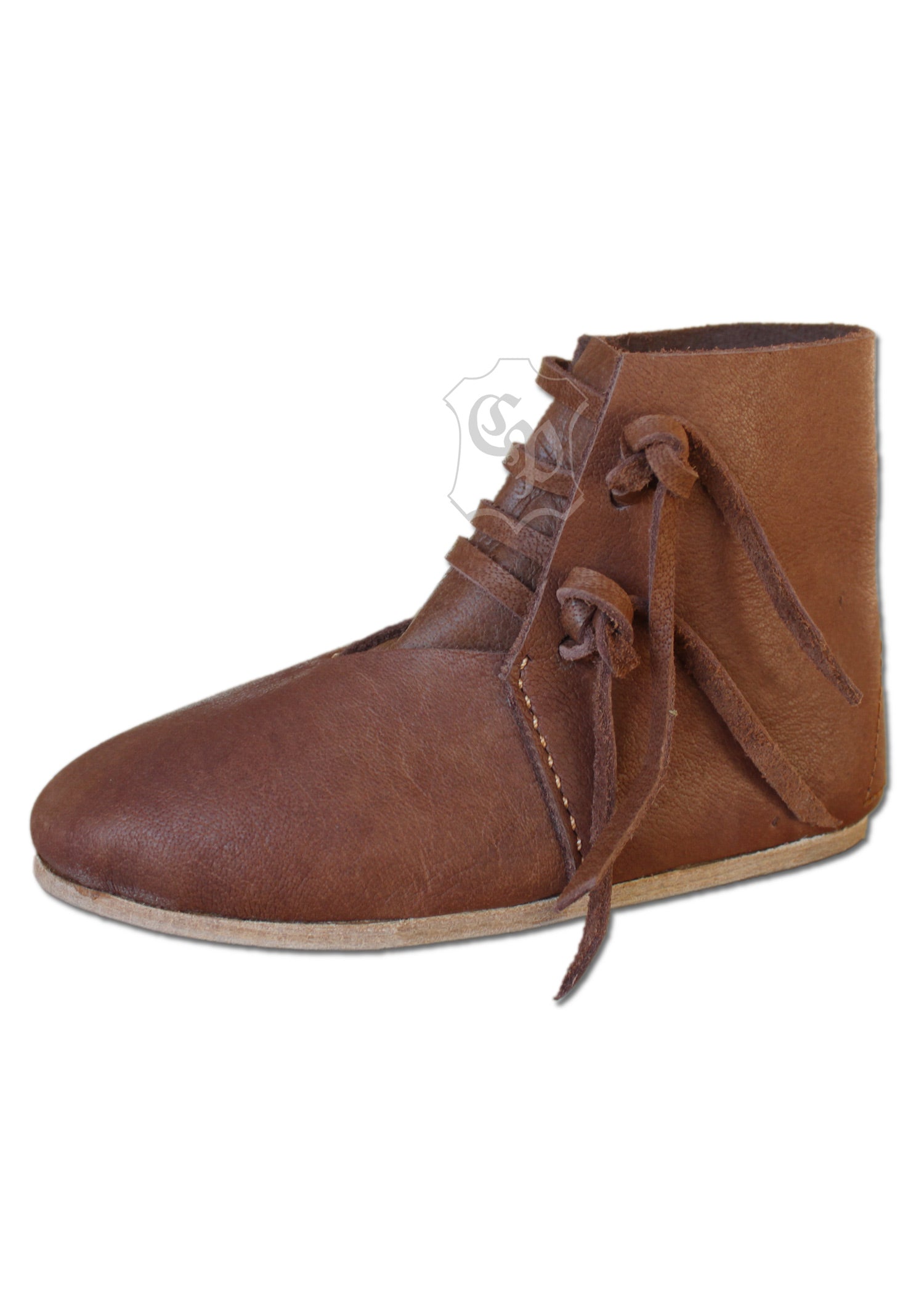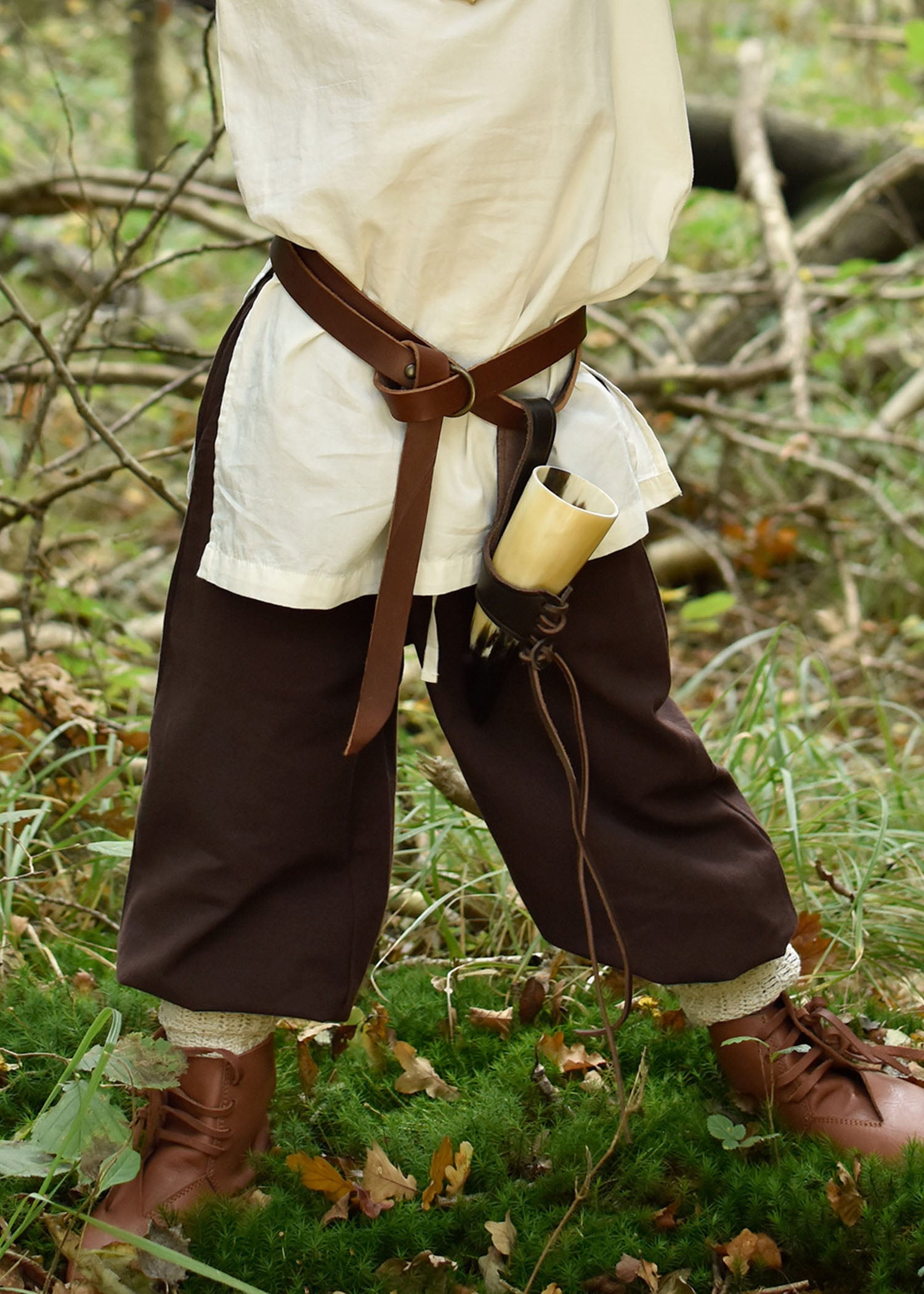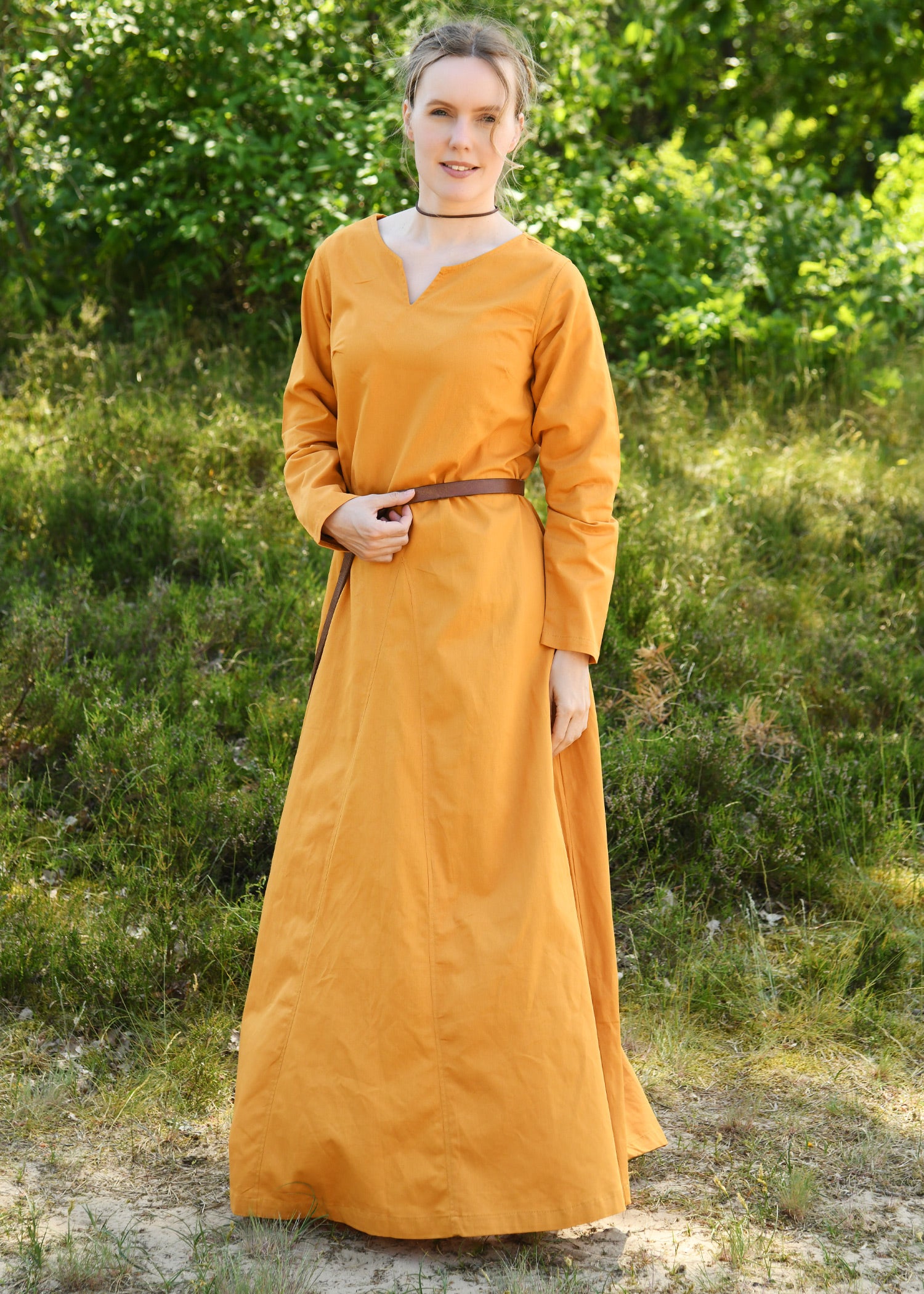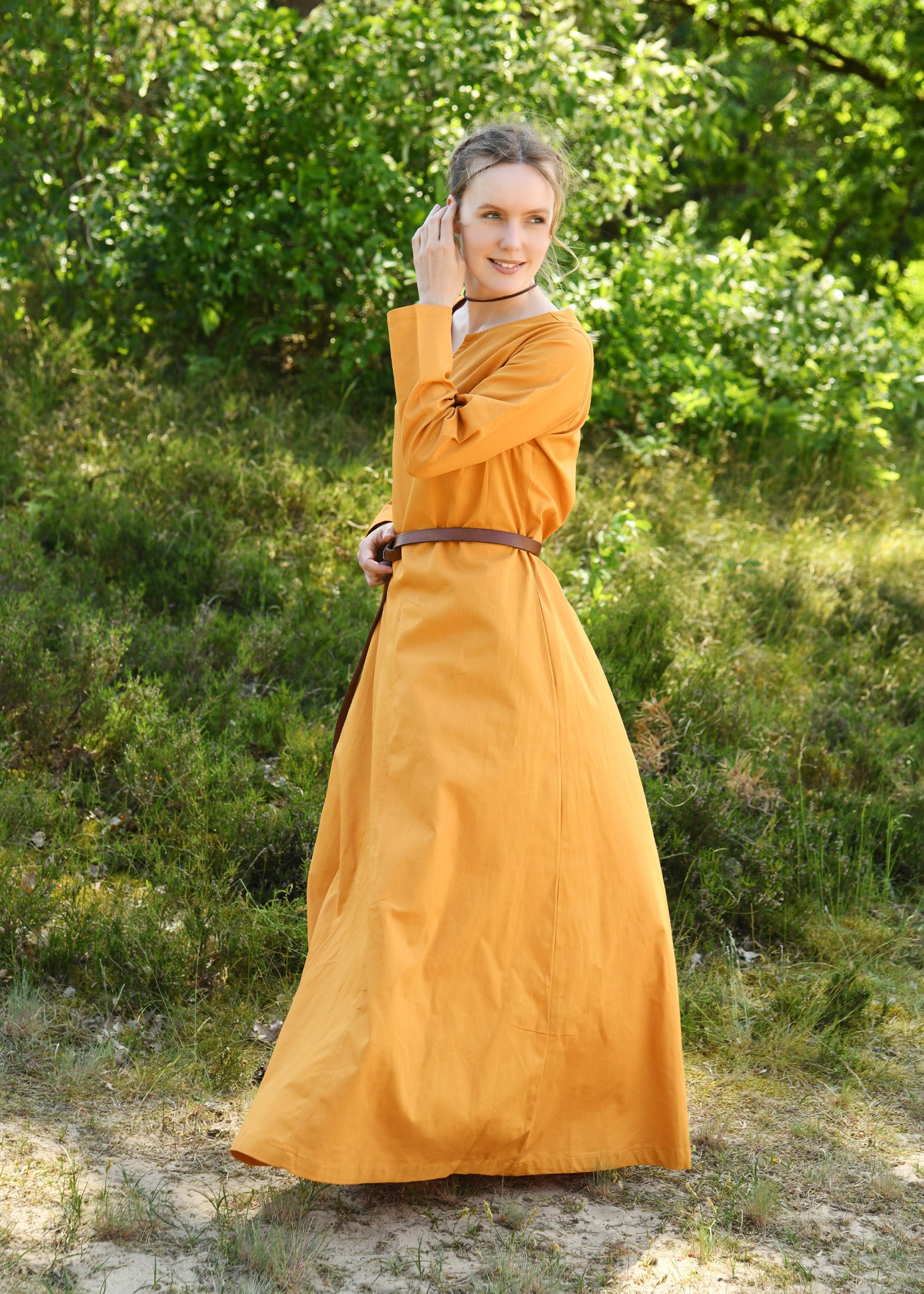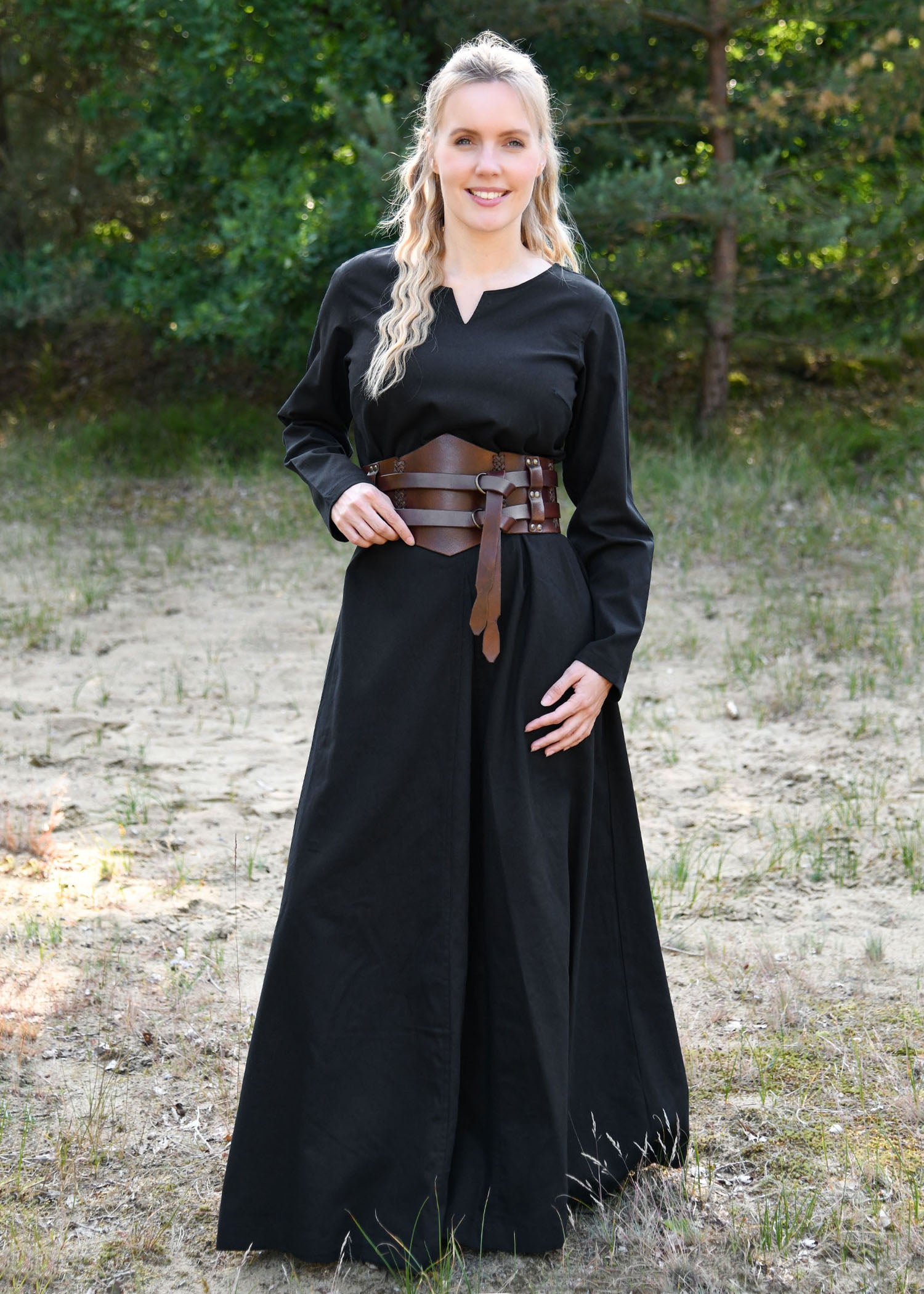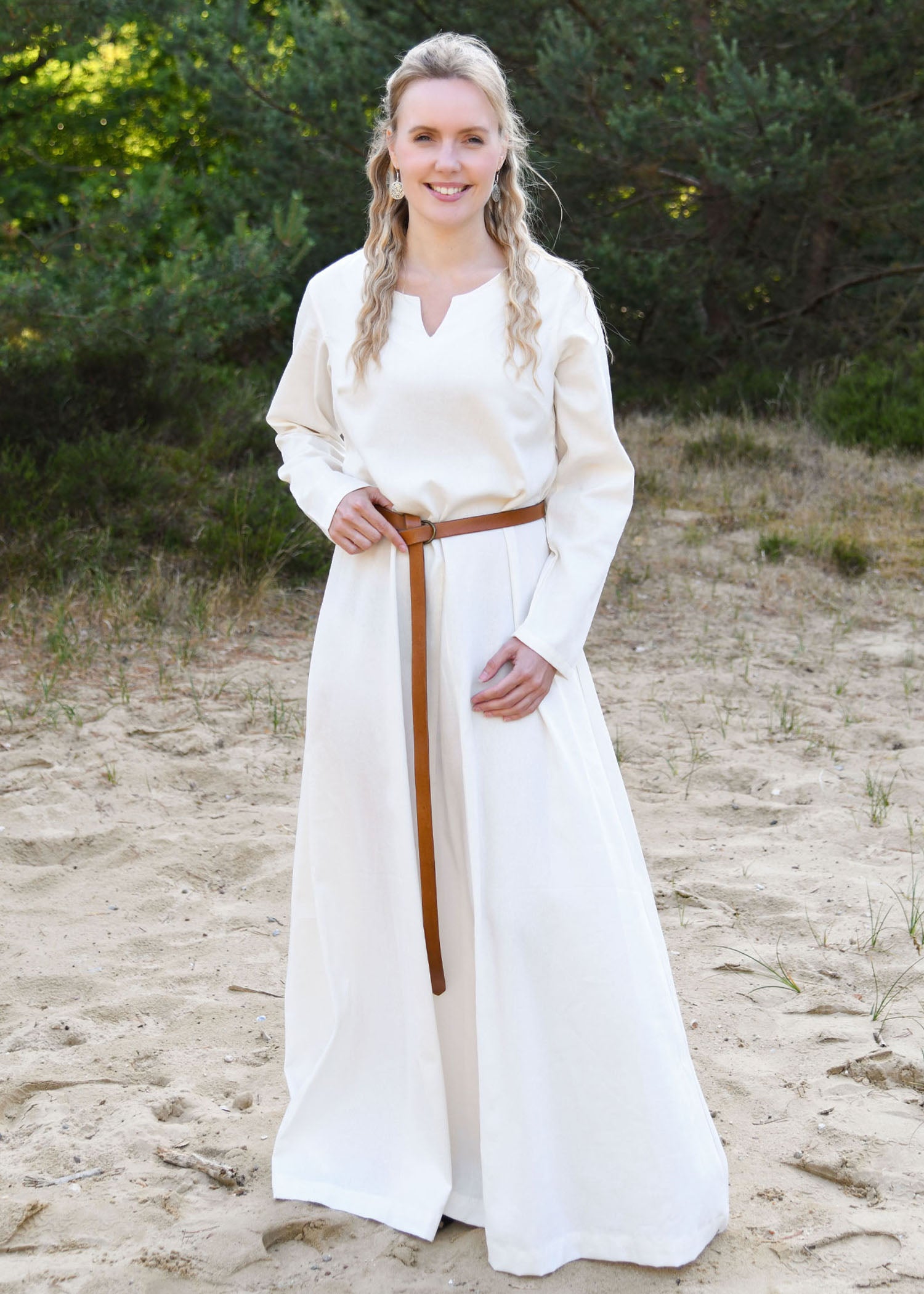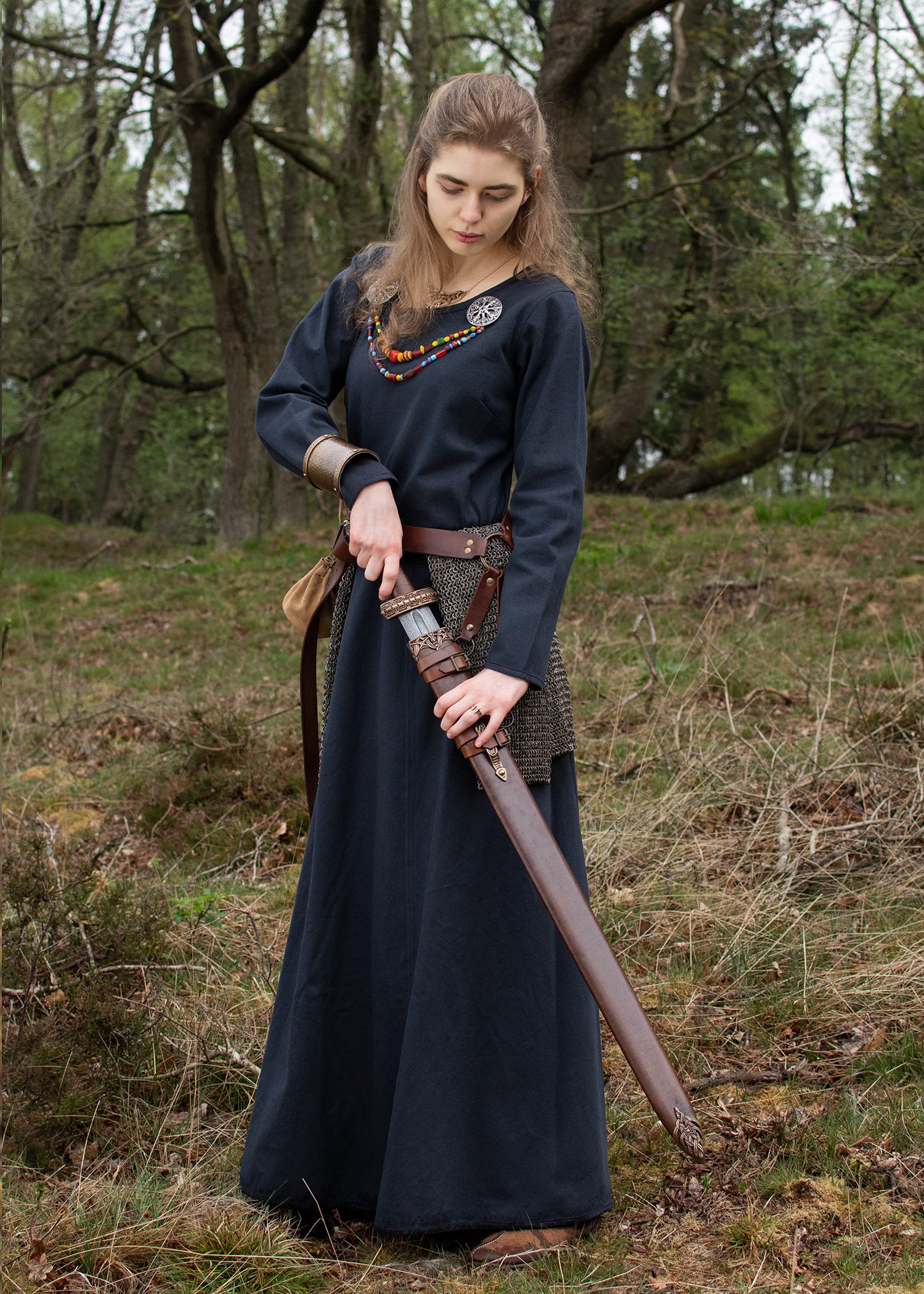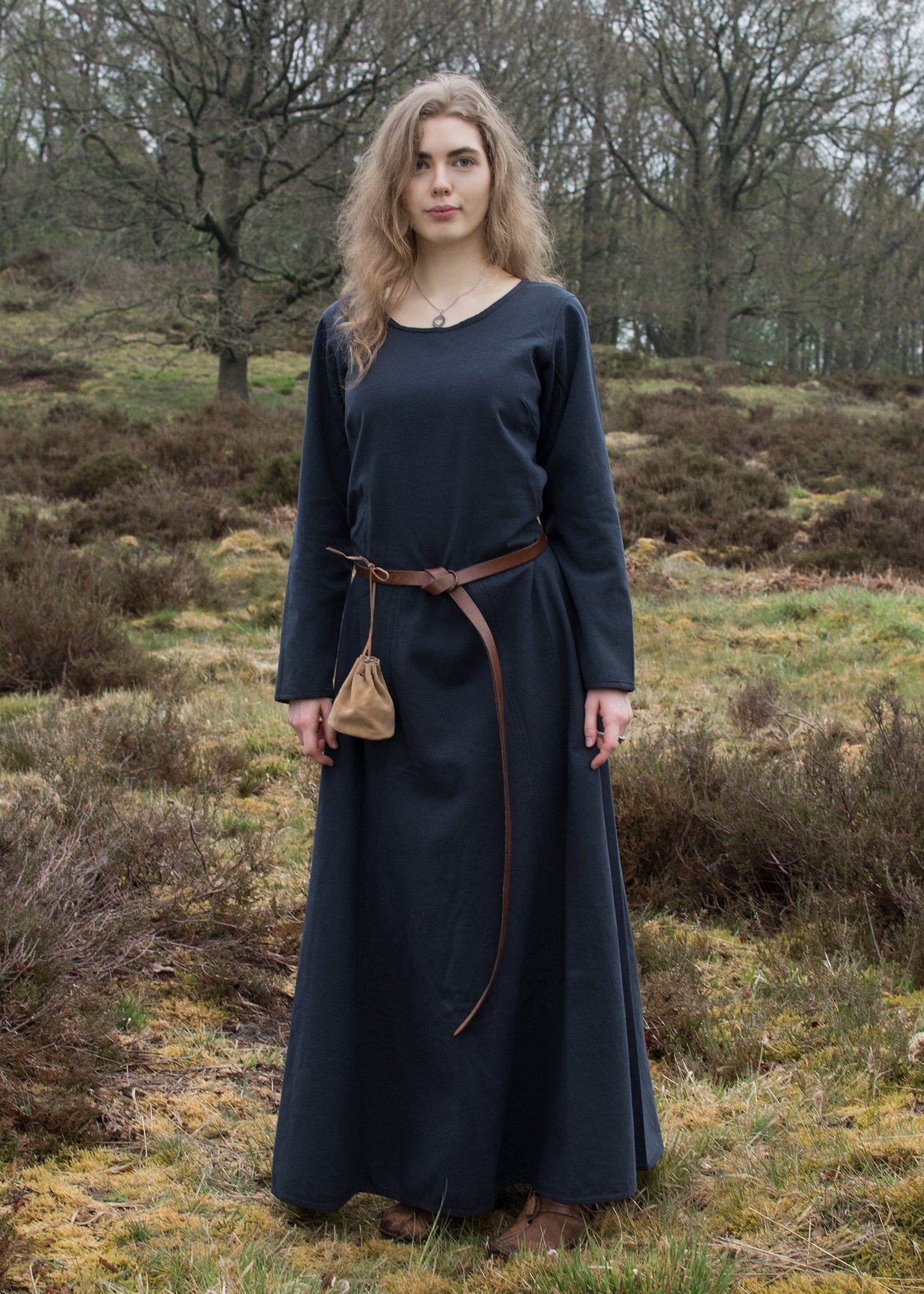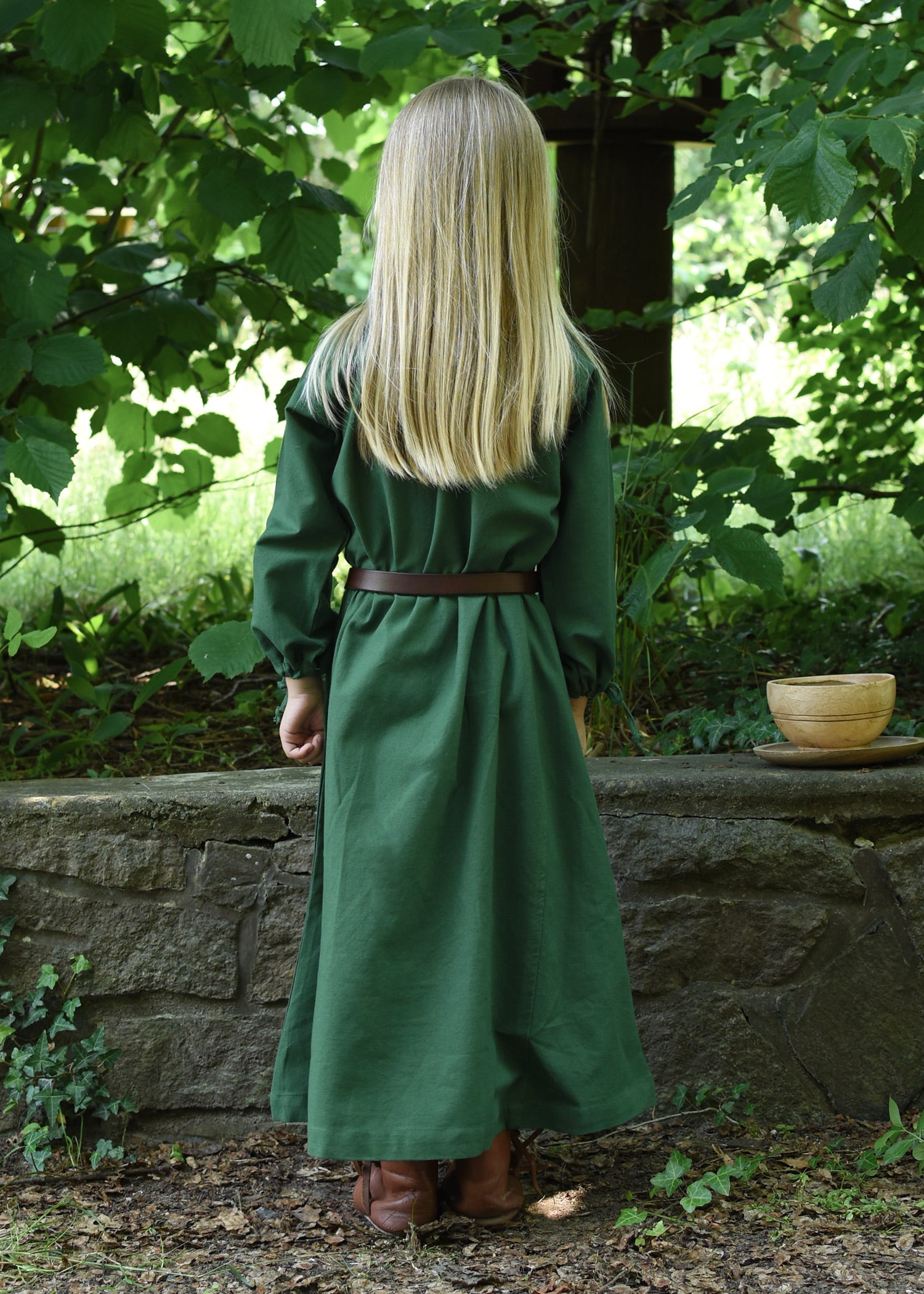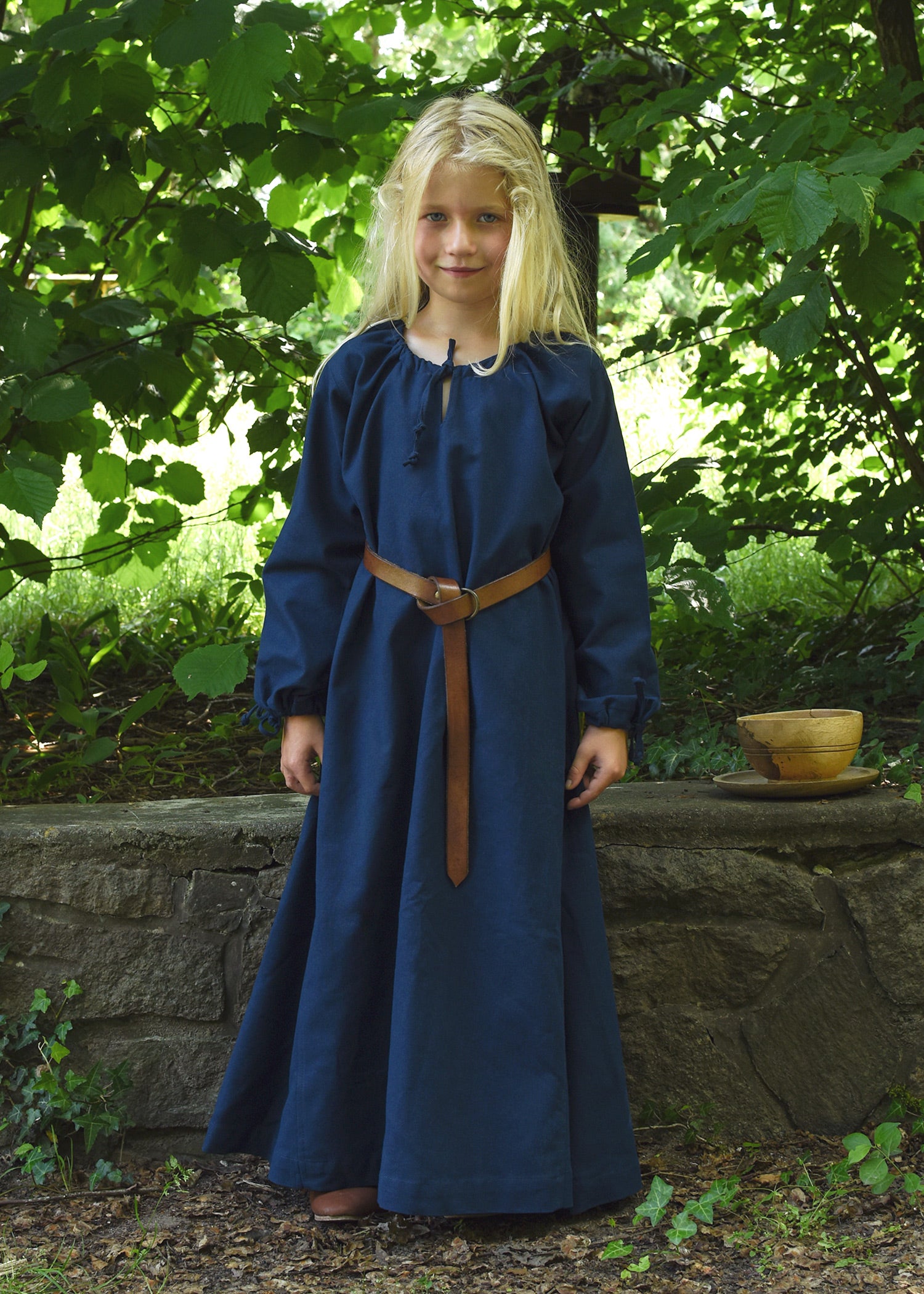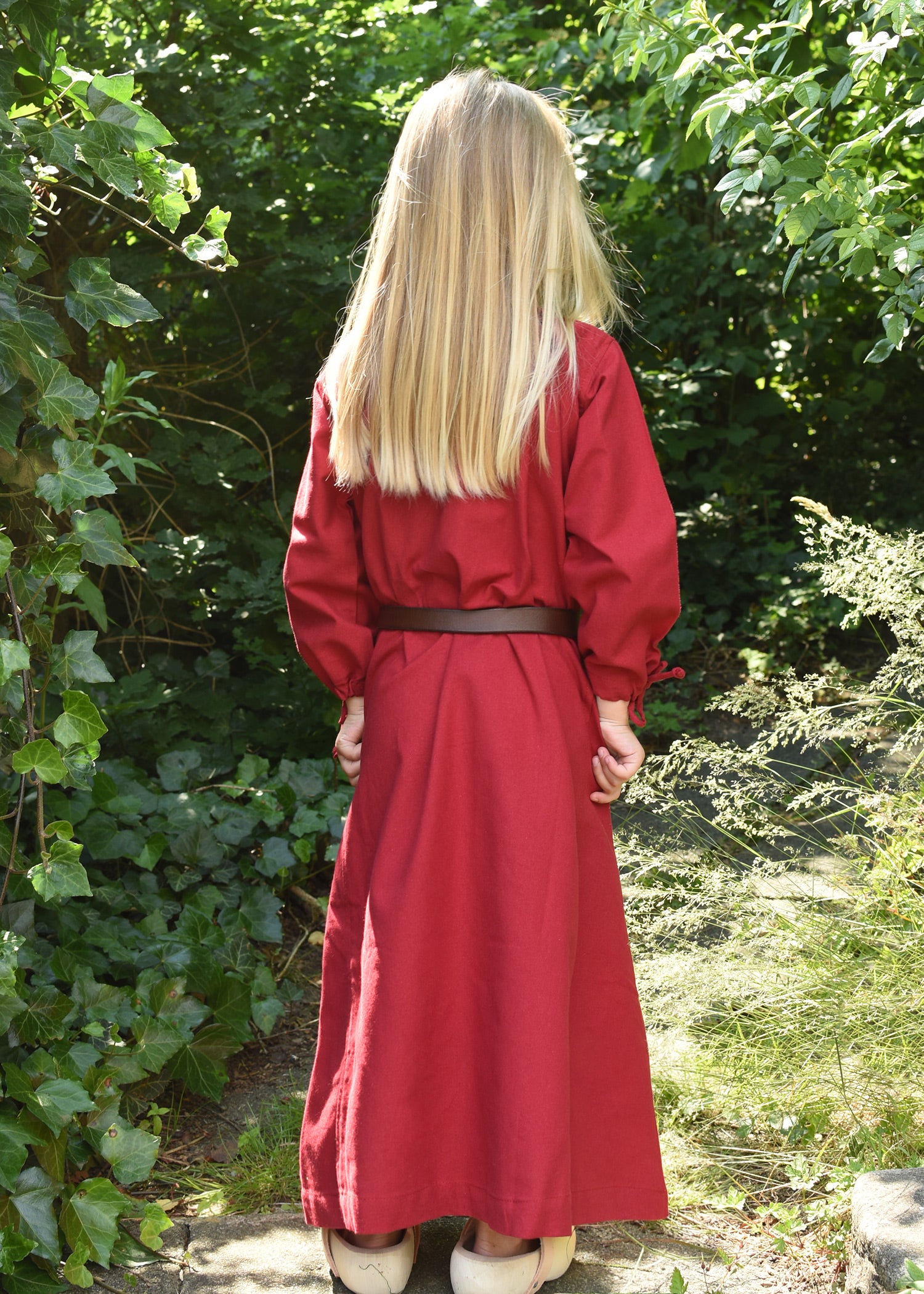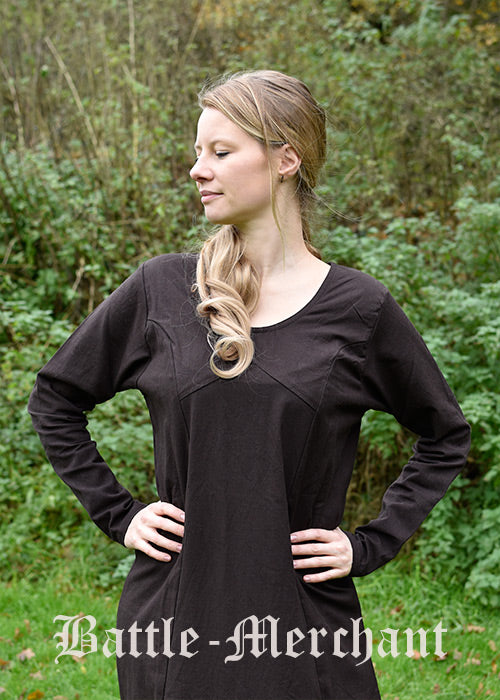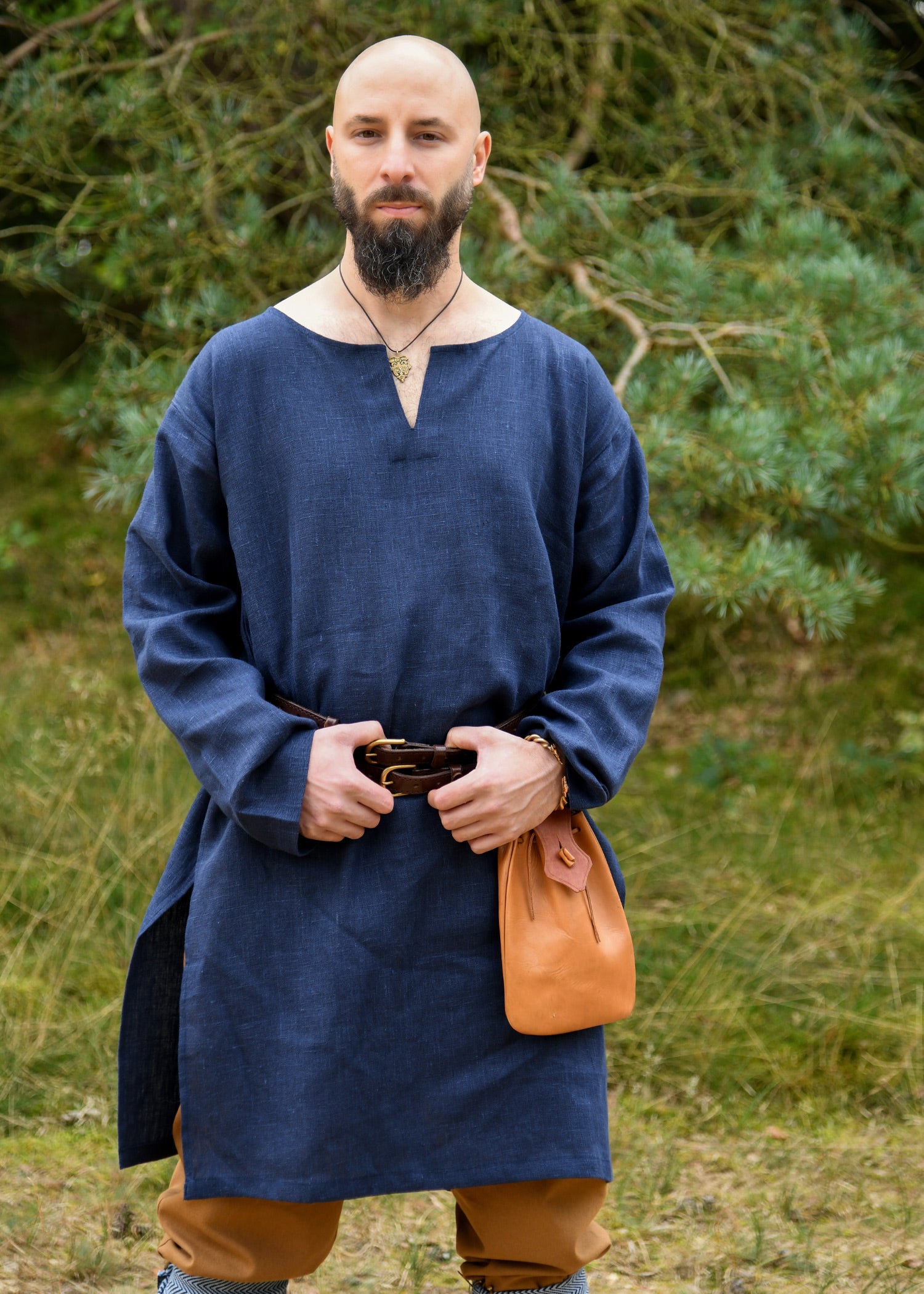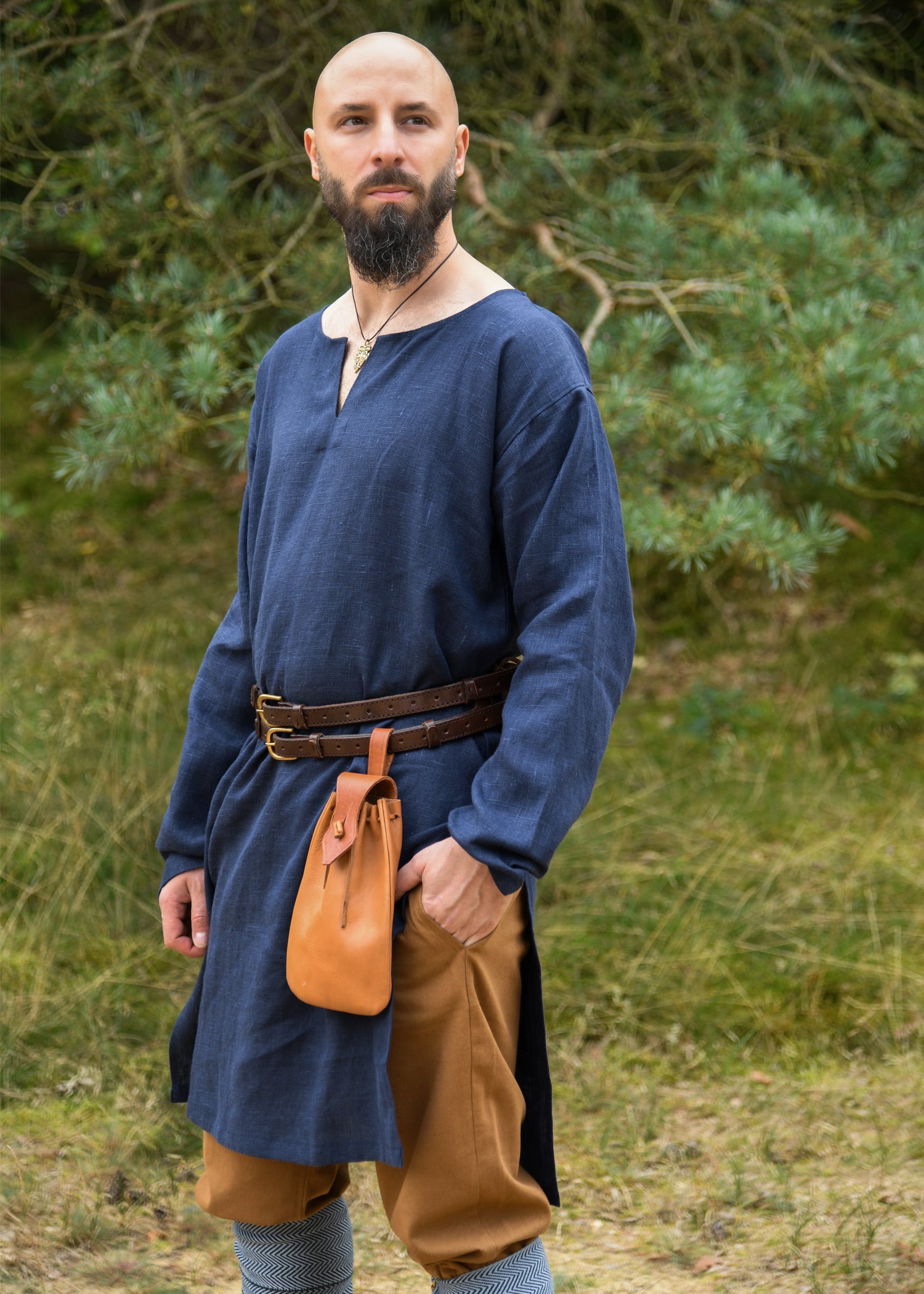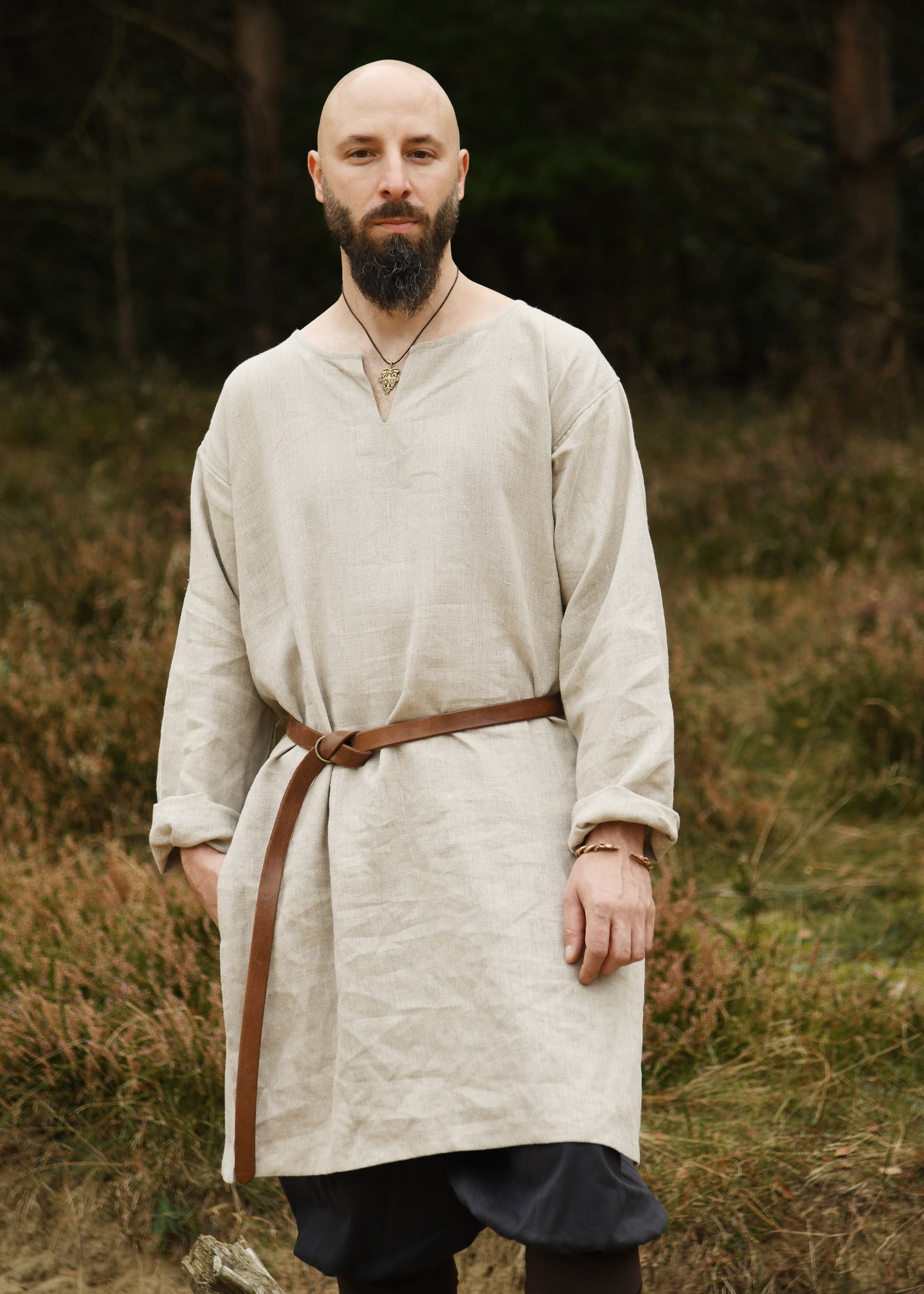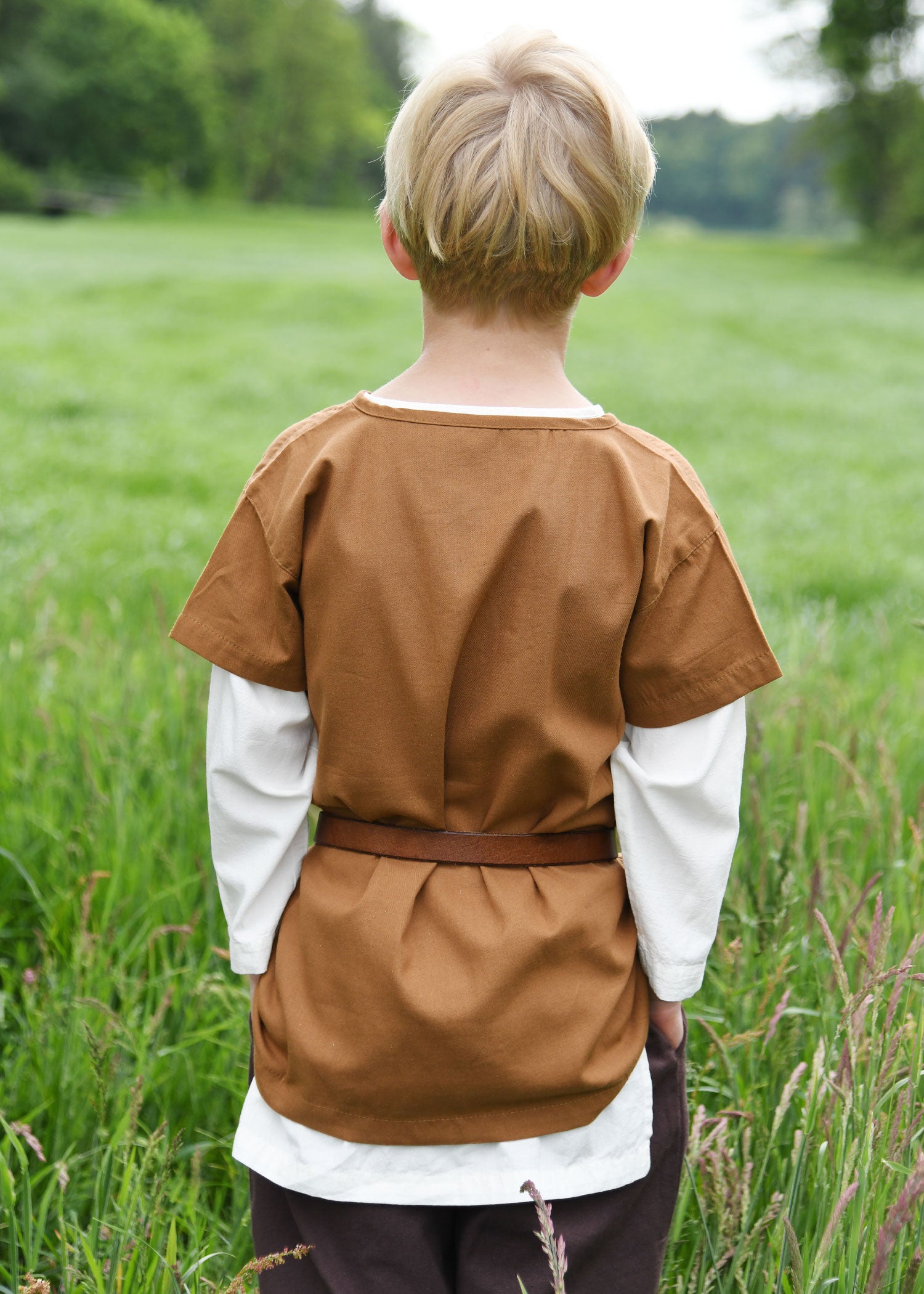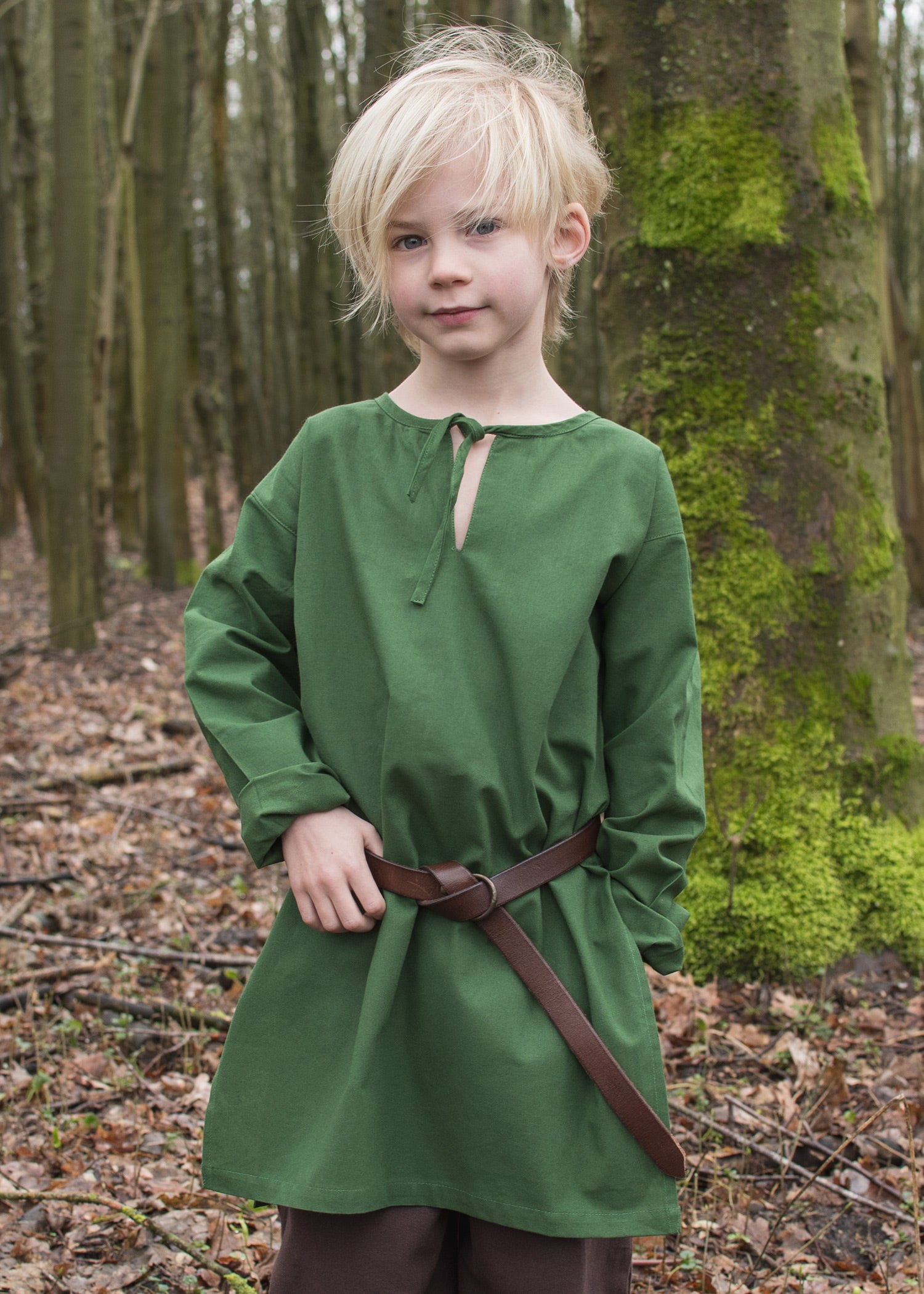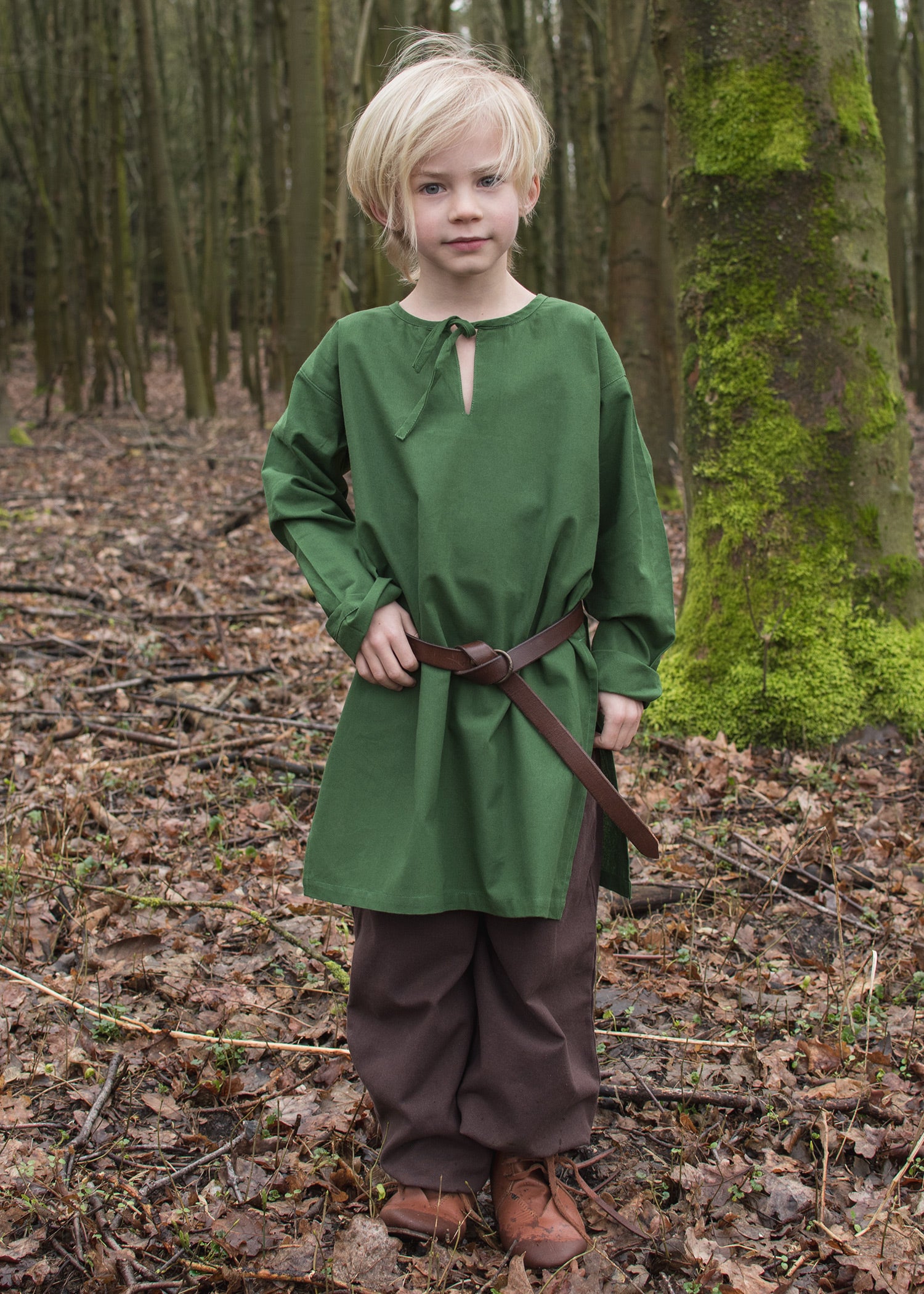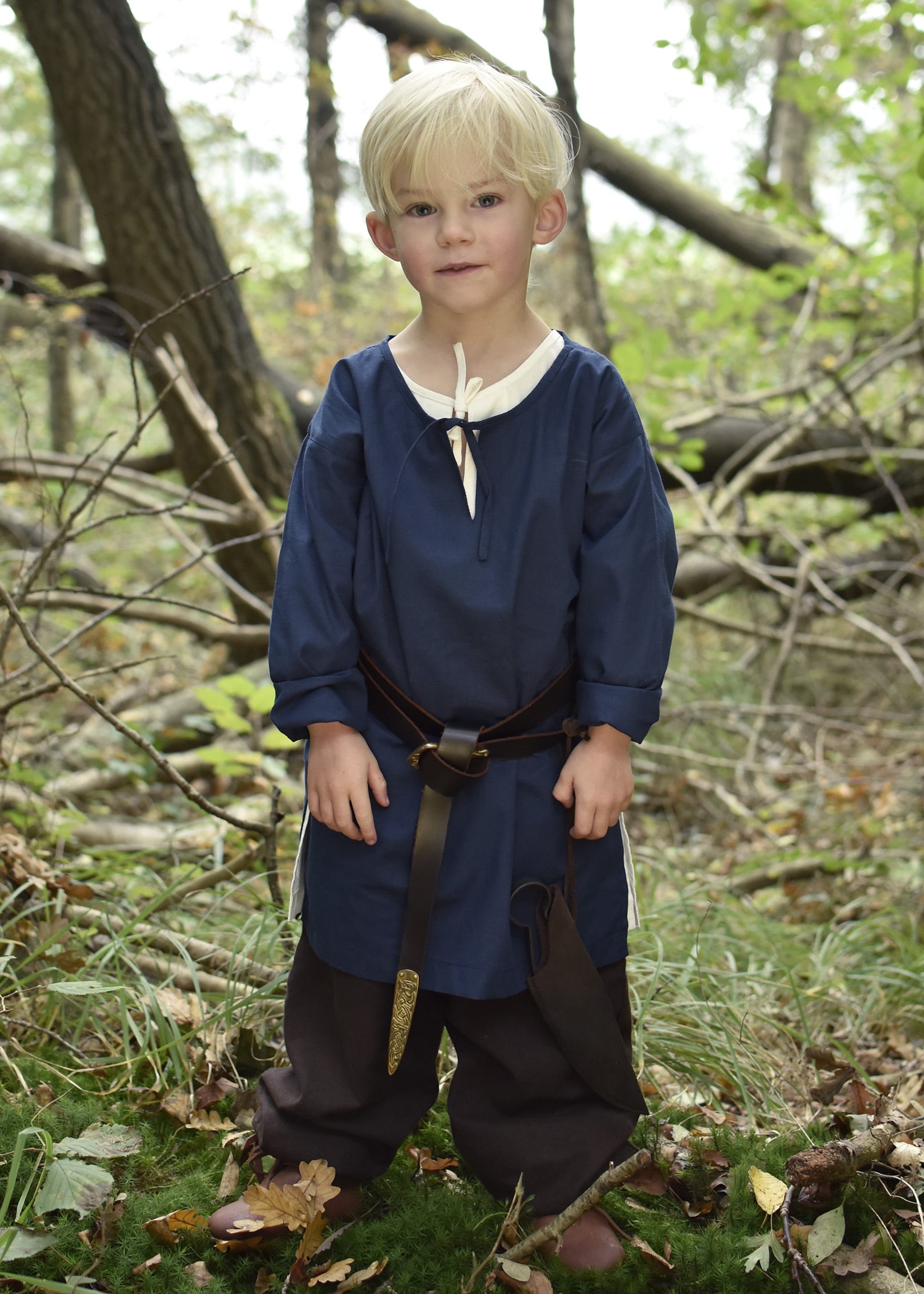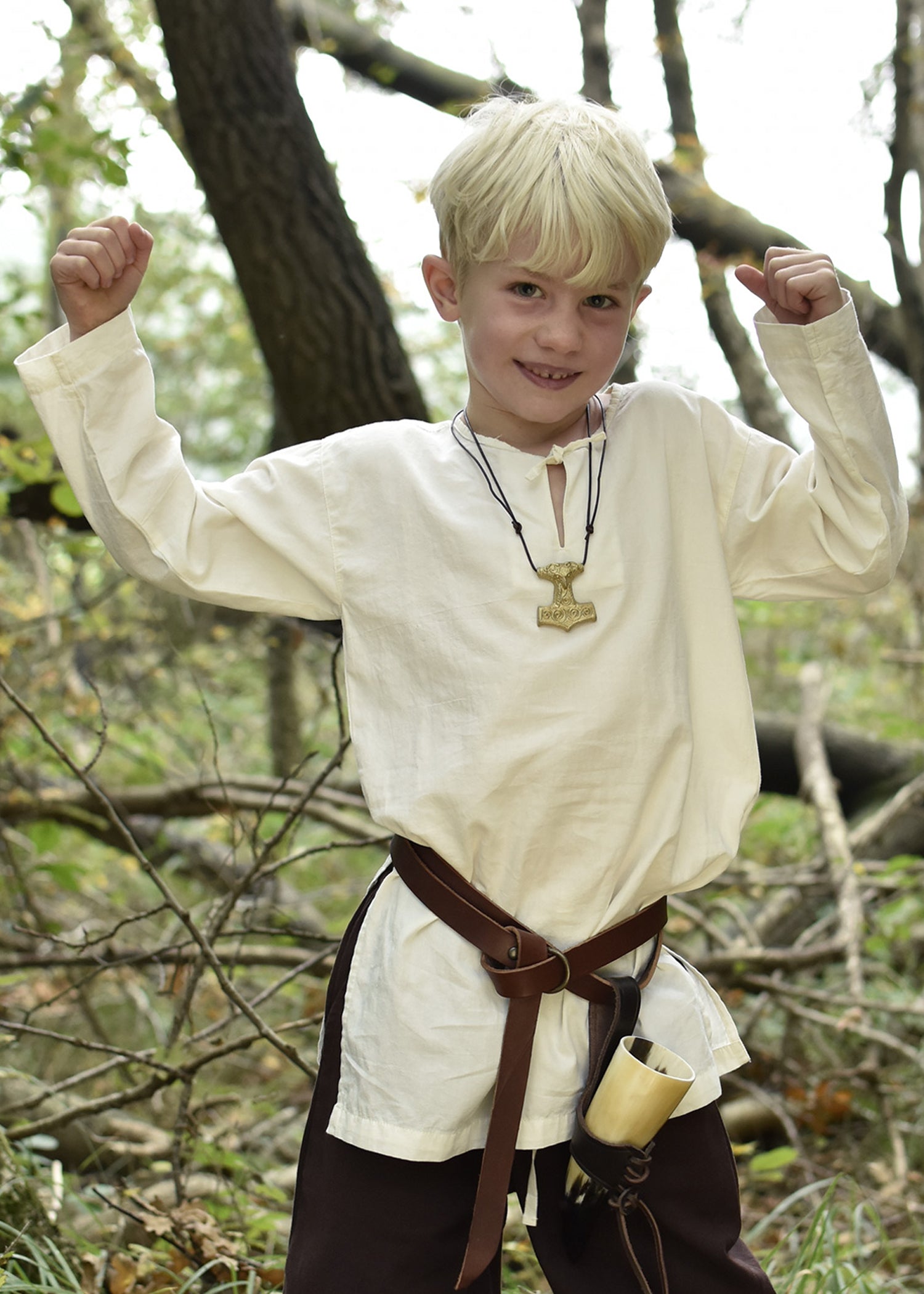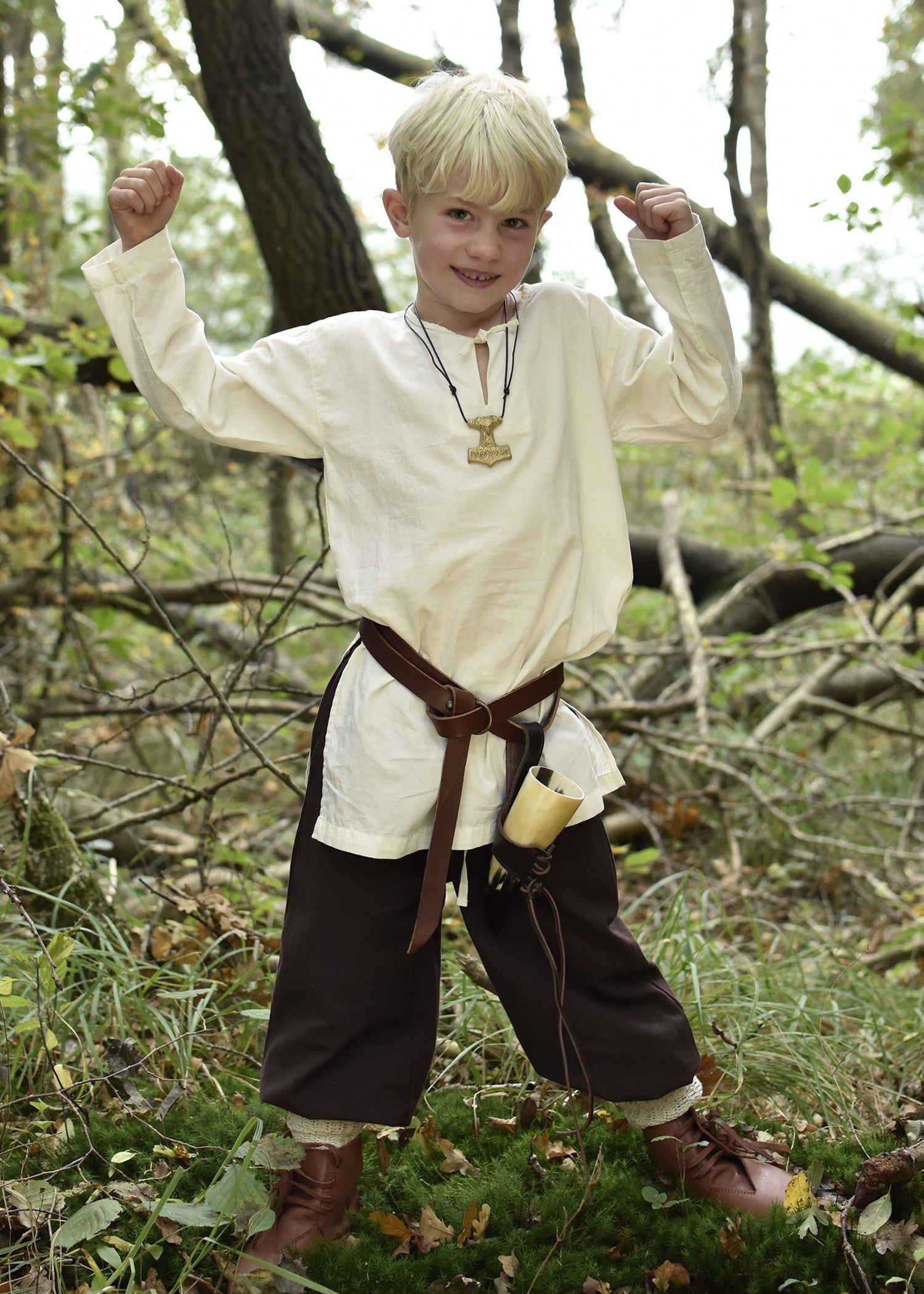Clothing and Footwear of the Early Middle Ages (5th - 11th Centuries): History and Tradition
In this collection, we explore the main garments and footwear worn during the Early Middle Ages, a period marked by functionality and social representation through clothing. The garments, differentiated by gender, reflect the customs and needs of the time.
Men's clothing
- Tunic: The most common garment for men, usually made of wool or linen. It was simple and fitted with a belt, while men of higher social status wore longer, more decorated tunics.
- Cloak or mantle: Essential in cold regions, cloaks were used both in daily life and in ceremonies and were usually made of wool.
- Trousers: Tight-fitting and made of different fabrics depending on the social class, they were essential to cover the legs.
- Belt: Long and often decorated with metal buckles, it was used to adjust the tunic and carry tools or weapons.
- Boots or shoes: Made of leather, they offered protection in the field or in battle. Boots were taller in colder regions.
- Hat or cap: Used for protection from the cold or sun, from simple wool designs to decorative hats for nobles and warriors.
Women's Clothing
- Tunic or long dress: Similar to the men's tunic, but more ornate. Adjusted with a belt or cord, it reflected social status.
- Cloak or cape: More elaborate than the men's, they could include embroidery or fur depending on the social class.
- Belt: Made of leather, used to adjust clothing and carry small objects or keys.
- Headdress or veil: Used to cover the head, from simple designs for peasants to decorated headdresses for nobles.
- Shoes or boots: Functional leather footwear, with more ornate designs for upper-class women.
- Gloves: Worn by high-status women, made of leather or fine materials.
Relive the Elegance and Functionality of the High Middle Ages
At Medieval Store, we offer a unique selection of Early Medieval clothing and footwear , carefully designed to capture the authenticity and historical detail of this fascinating era. Complete your medieval attire with pieces that reflect the tradition and functionality of centuries past.








